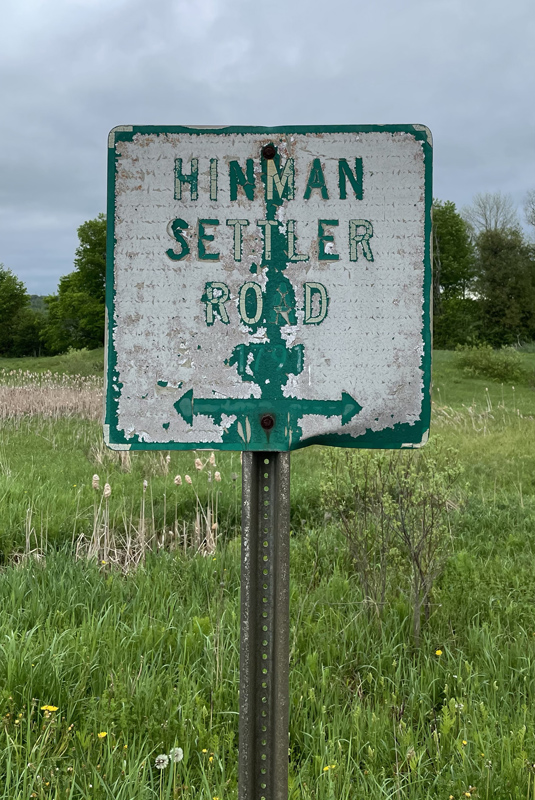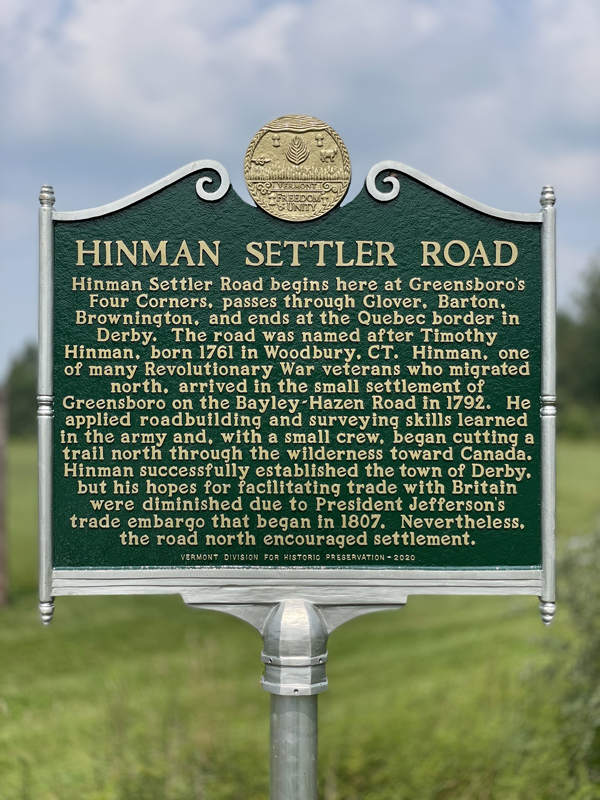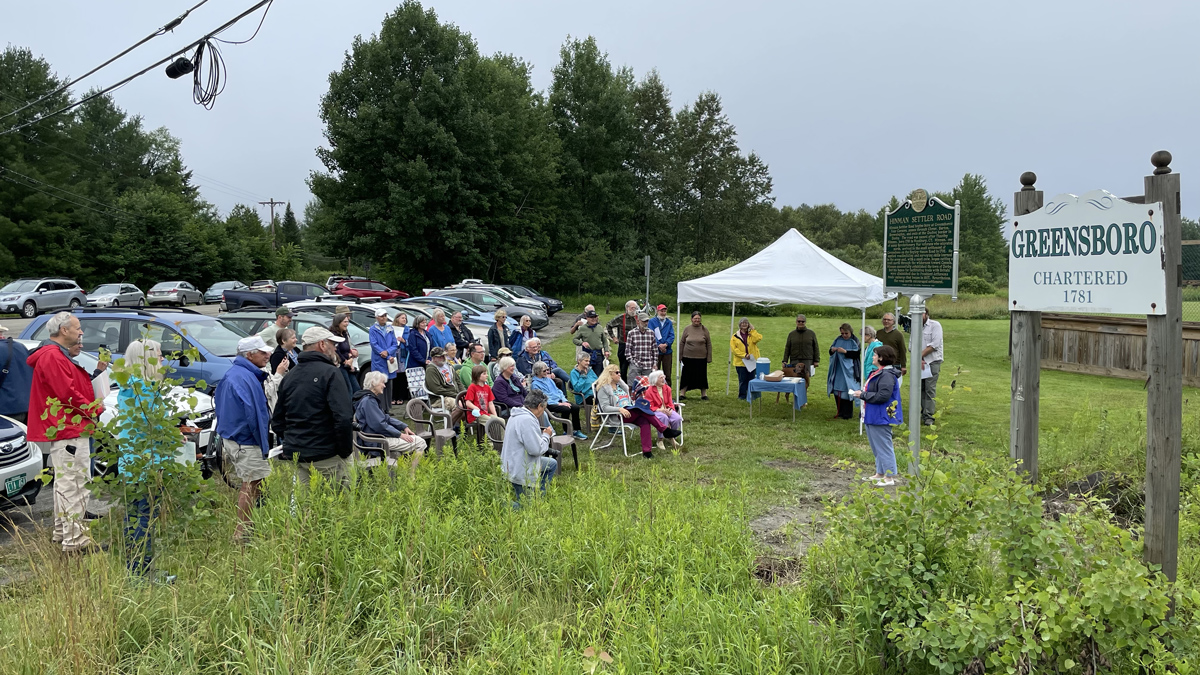- Details
- Hits: 4953
Summer Presentation: "The First Vermonters -- Indigenous People" Part II
Presentation by Bobby Farlice-Rubio of Fairbanks Museum
The Abenaki people have lived in Vermont for thousands of years, and they are still here today. By focusing on the individual lives of seven famous Abenakis from different centuries, we’ll explore how their culture has survived the centuries and evolved to meet the challenges of a changing world. We’ll also discover how the Abenaki Nation has shaped the present and future of all of Vermont’s people.
When: August 5th (Monday) at 7:00pm
Where: Fellowship Hall of the Greensboro United Church of Christ
Click on the image below to view a video of the presentation
- Details
- Hits: 4235
Summer Presentation:
"Timothy Hinman: Hero or Rogue?"
Presentation by researchers
Gail Sangree & Peggy Day Gibson
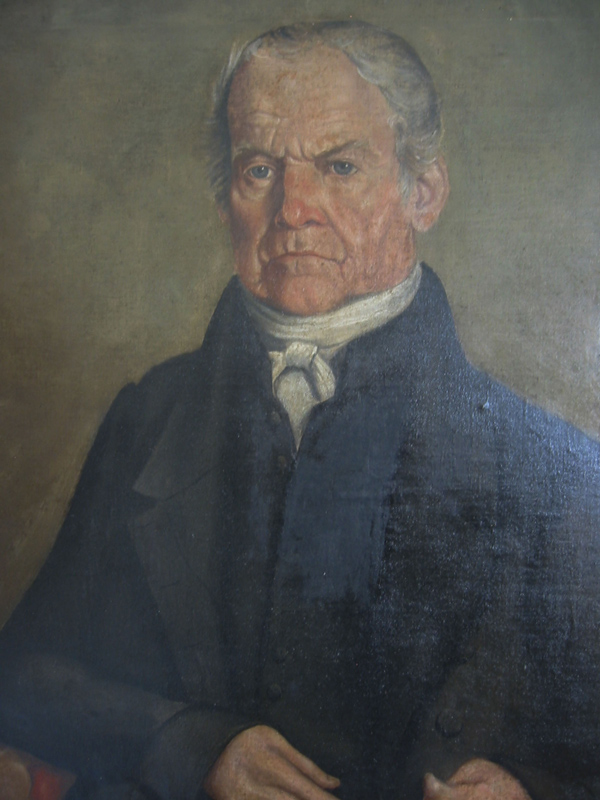 Portrait, Timothy Hinman Portrait, Timothy Hinman |
Around fifty members and guests of the GHS met on August 9 in Fellowship Hall to learn more about the life and accomplishments of Timothy Hinman, a remarkable historical figure who spearheaded the construction of a wilderness road leading from Greensboro to Derby in the early 1790s.
Peggy Gibson, retired director of the Orleans County Historical Society, spoke first of Hinman’s many accomplishments, including learning surveying in the Revolutionary Army after being recruited at the age of fifteen, leading the construction of the Hinman Settler Road, founding the town of Derby, and serving as both a county judge and a state legislator. Gibson then presented many more details about the Hinman Settler Road, both historical and present-day.
Gail Sangree, who has done extensive research on Timothy Hinman, then spoke on other aspects of his life. Highlights of this in-depth talk included learning of the difficulties Hinman experienced trying to keep his own expenses separate from those of his new town and hearing the story about how he got into financial trouble after borrowing the then-enormous sum of $11,000 from the Vermont State Bank. As a result, he spent several years in jail before again being elected to town office.
Hinman died in 1850, and his tombstone described him as a “faithful, honest, just and good man.” It was then up to the audience to decide if he was a rogue or a hero. When hands were raised, approximately 50% voted for rogue and 50% for hero! Perhaps that is the best one can hope for in a life well-lived.
When: August 9th (Monday) at 7:00pm
Where: Fellowship Hall of the Greensboro United Church of Christ
"Timothy Hinman: Hero or Rogue?"
Part 1 with Peggy Day Gibson
Click on the image below to view a video of the presentation
"Timothy Hinman: Hero or Rogue?"
Part 2 with Gail Sangree
Click on the image below to view a video of the presentation
Hinman Settler Road sign
(corner of Lauredon Ave and Craftsbury Rd - Across from Grange)
|
Sign (previous) in Greensboro across from Grange |
Sign (current) in Greensboro across from Grange |
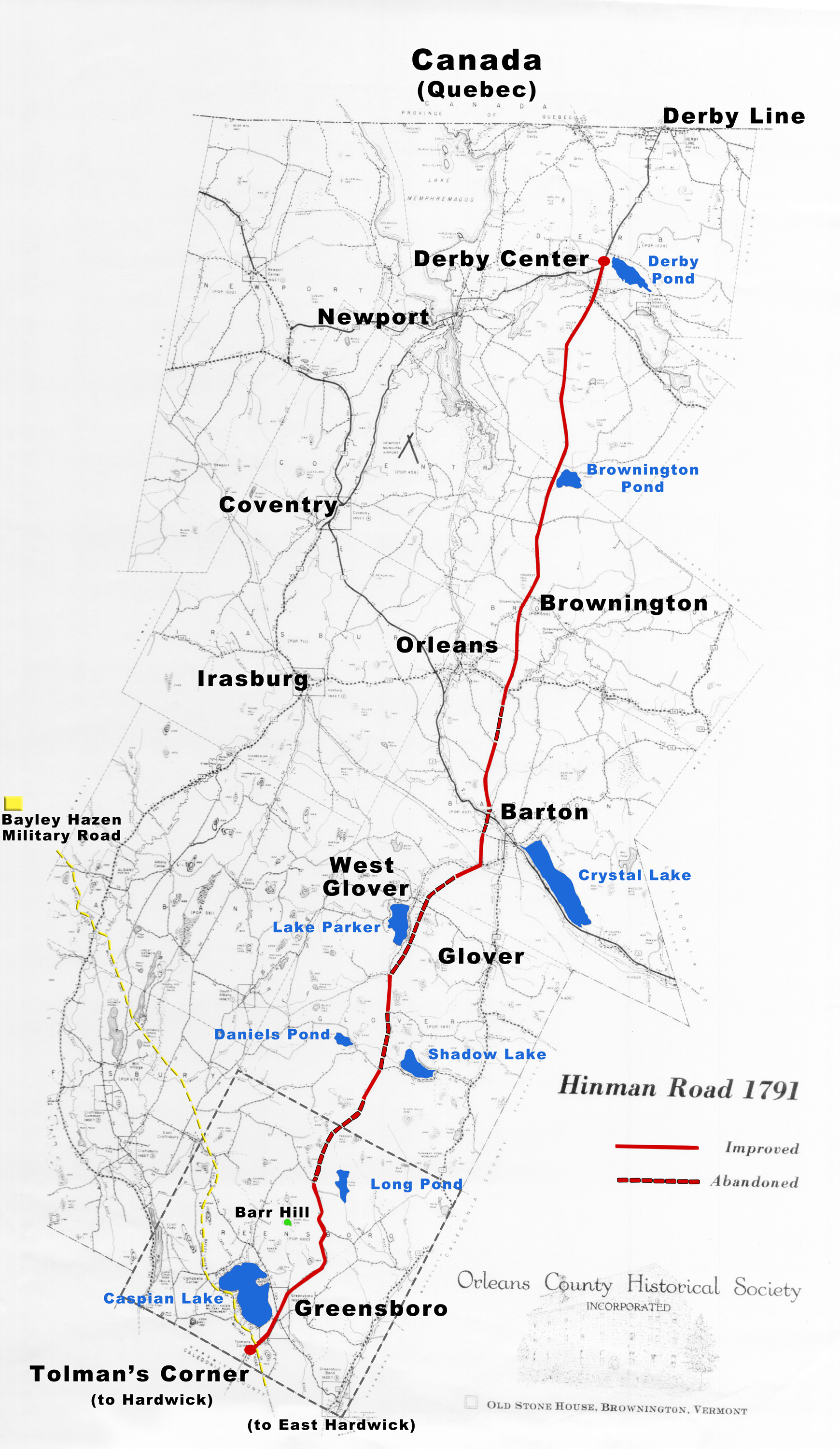
(Permission to re-print and augment this map given by Orleans County Historical Society/Old Stone House and Historic Village)
Dedication of the Official Hinman Settler Road Sign
On July 21, over fifty people gathered at Tolman Corner to dedicate an historic site marker commemorating the starting point of the Hinman Settler Road, which linked Greensboro to the Bayley-Hazen Road and points north to Derby.
Timothy Hinman (1761-1850) carved the road into the wilderness between 1792 and 1793 to help open up northern areas for broader settlement. The road eventually became part of the stagecoach road between Boston and Quebec. The new sign complements a similar sign in Derby honoring Hinman’s founding of that town.
The dedication event featured talks by Laura Trieschmann, state historic preservation officer, and Gail Sangree, an authority on Timothy. Attendees included two descendants of Timothy Hinman, Conrad Bellavance and Paulette Brochu-Colburn, who praised the effort. Additionally, the group enjoyed a performance by the Northeast Kingdom Sacred Harp Singers, who shared songs written in that era.
For additional information, visit the GHS for a map of the Hinman Settler Road or purchase a copy of this year’s Hazen Road Dispatch, available for sale locally at the GHS, Willey’s, Smith’s Store and the Galaxy Book Store.
|
Hinman Settler Road sign produced by |
|
Laura Trieschmann, state historic preservation officer, speaks at the sign dedication |
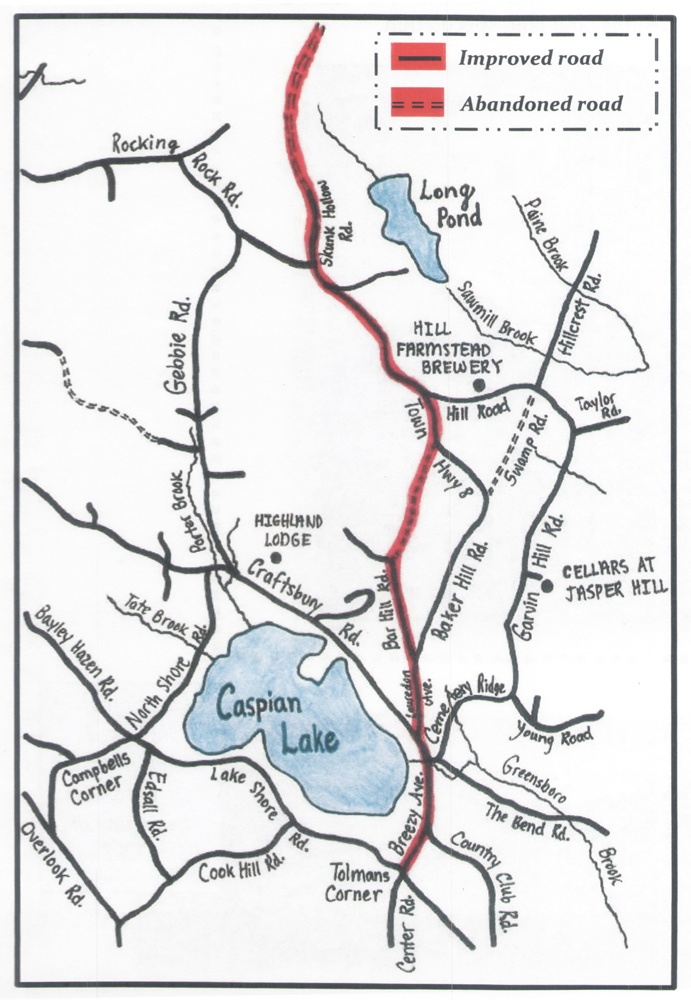
(Detailed map by Amelia and Leo Circosta)
- Details
- Hits: 6451
Winter Presentation: "Treasure from the VHS Attic"
Presentation by Steve Perkins of Vermont Historical Society

|
Steve Perkins, Director of the Vermont Historical Society, brought a cache of unique and priceless artifacts from the VHS collection to the annual winter meeting of the Greensboro Historical Society in Fellowship Hall on Sunday afternoon March 10. Among them were an Ottoman era sword owned by Lord Byron, epaulettes once worn by Vermonter Admiral Dewey (the most decorated Naval admiral in history), and the actual document accepting Vermont into the Union of United States as the 14th state, signed by Thomas Jefferson and preserved between sheets of gossamer silk. Mr. Perkins told colorful tales of the history of each piece -- its source, acquisition, and how it was part of the history of Vermont, the U.S. and the world. After the talk, many in the audience of 30 people examined the objects he had told about so colorfully: a sturdy, woven Swiss/Abenaki style brown ash basket made somewhere in the Mt. Mansfield area by a male in the Washburn family, an 1886 medal commemorating the first international hockey tournament in Burlington, the only extant complete set of Stamp Act metal stamps (used with sealing wax) in the U.S., and a billy club owned by a watchman at the Vermont Marble Company in Proctor who had decorated it with wood-burned cartoons of the 1936 strike there. Perkins invited everyone to visit the museum of the Vermont Historical Society on State Street in Montpelier next to the Capital which is filled with similar objects, and to explore the VHS headquarters on Washington Street in Barre which includes exhibit halls and the Leahy Library, much used by researchers. When: March 10th (Monday) at 2:00pm |
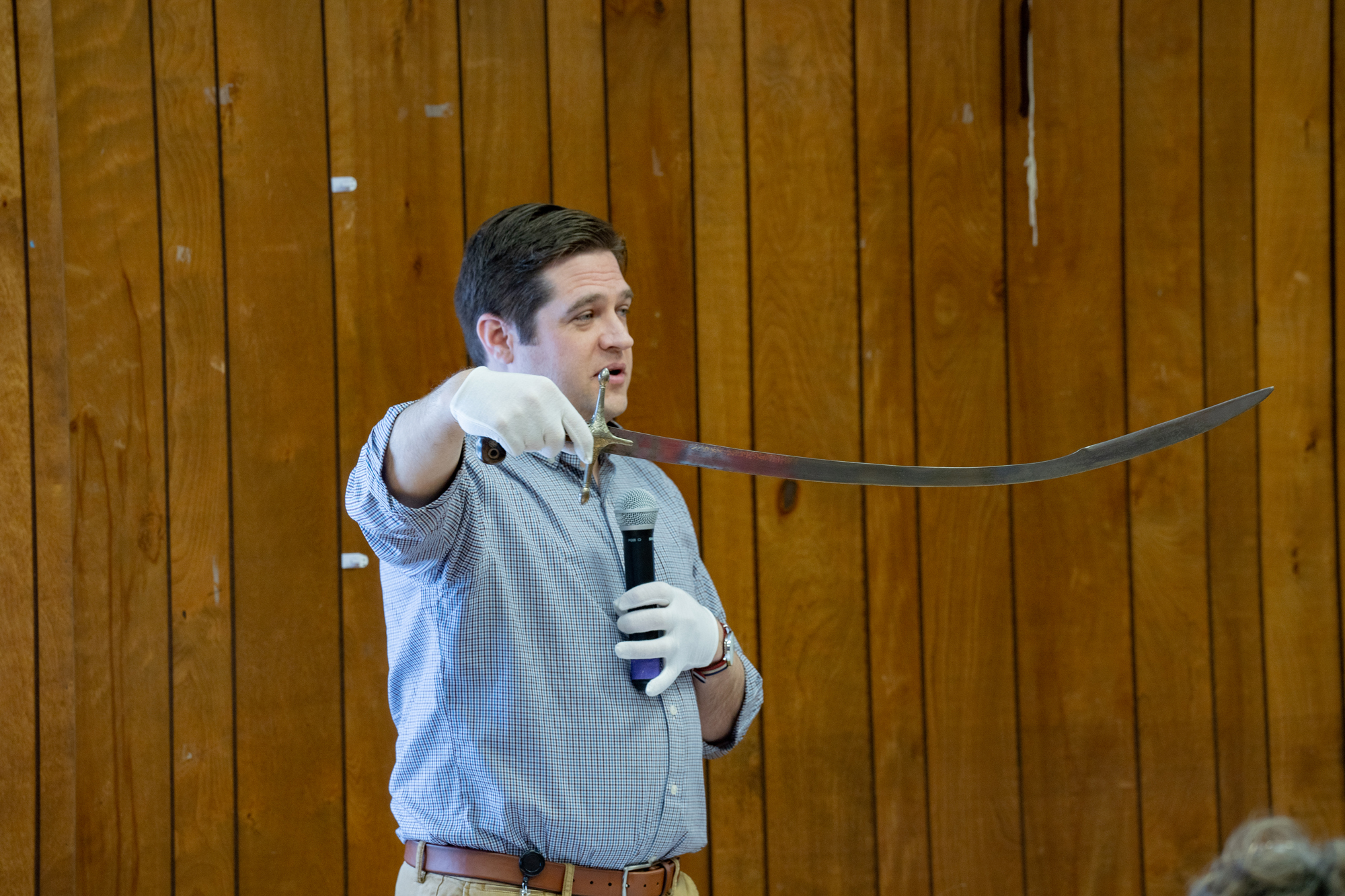
|
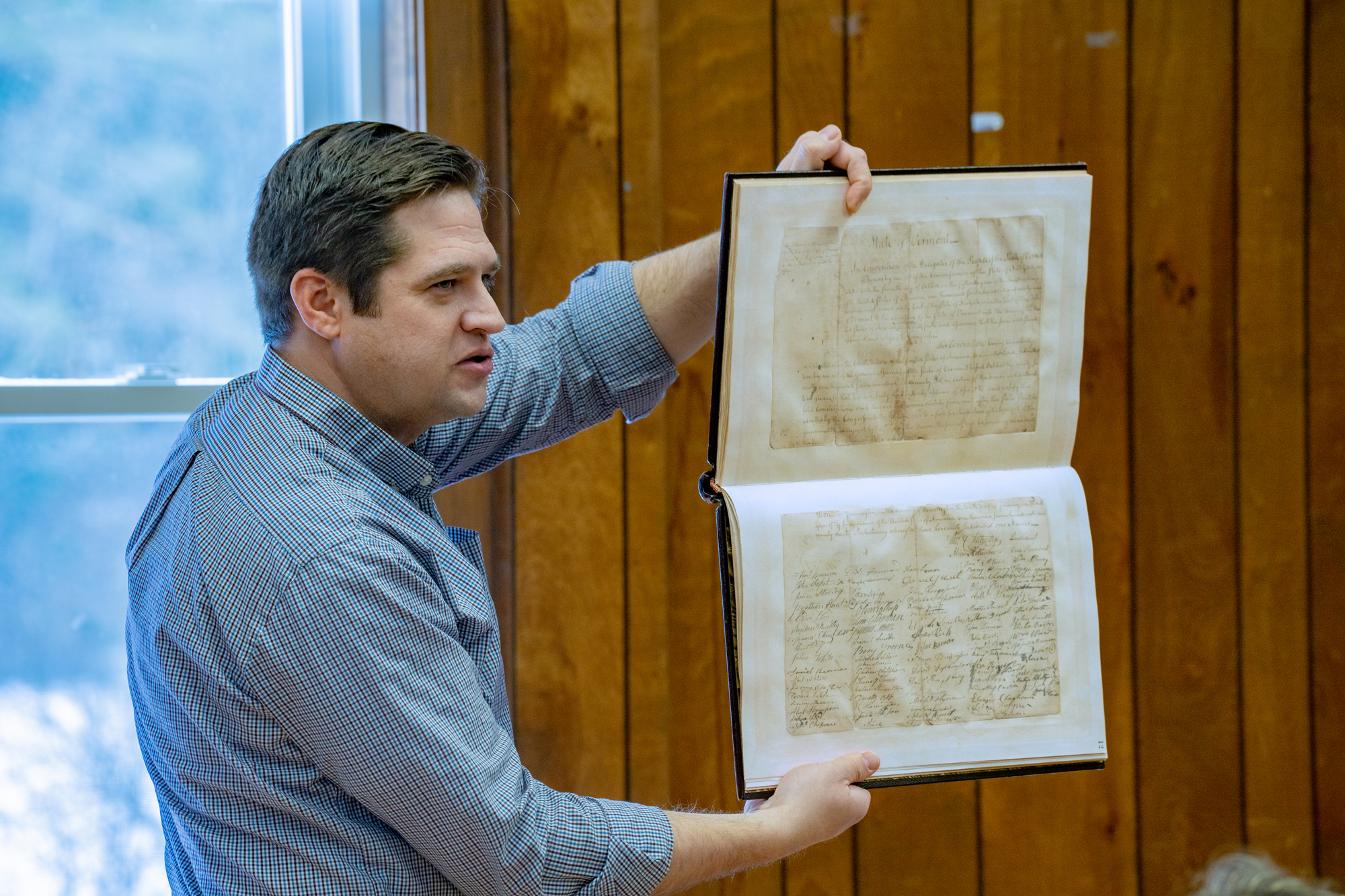
|

|
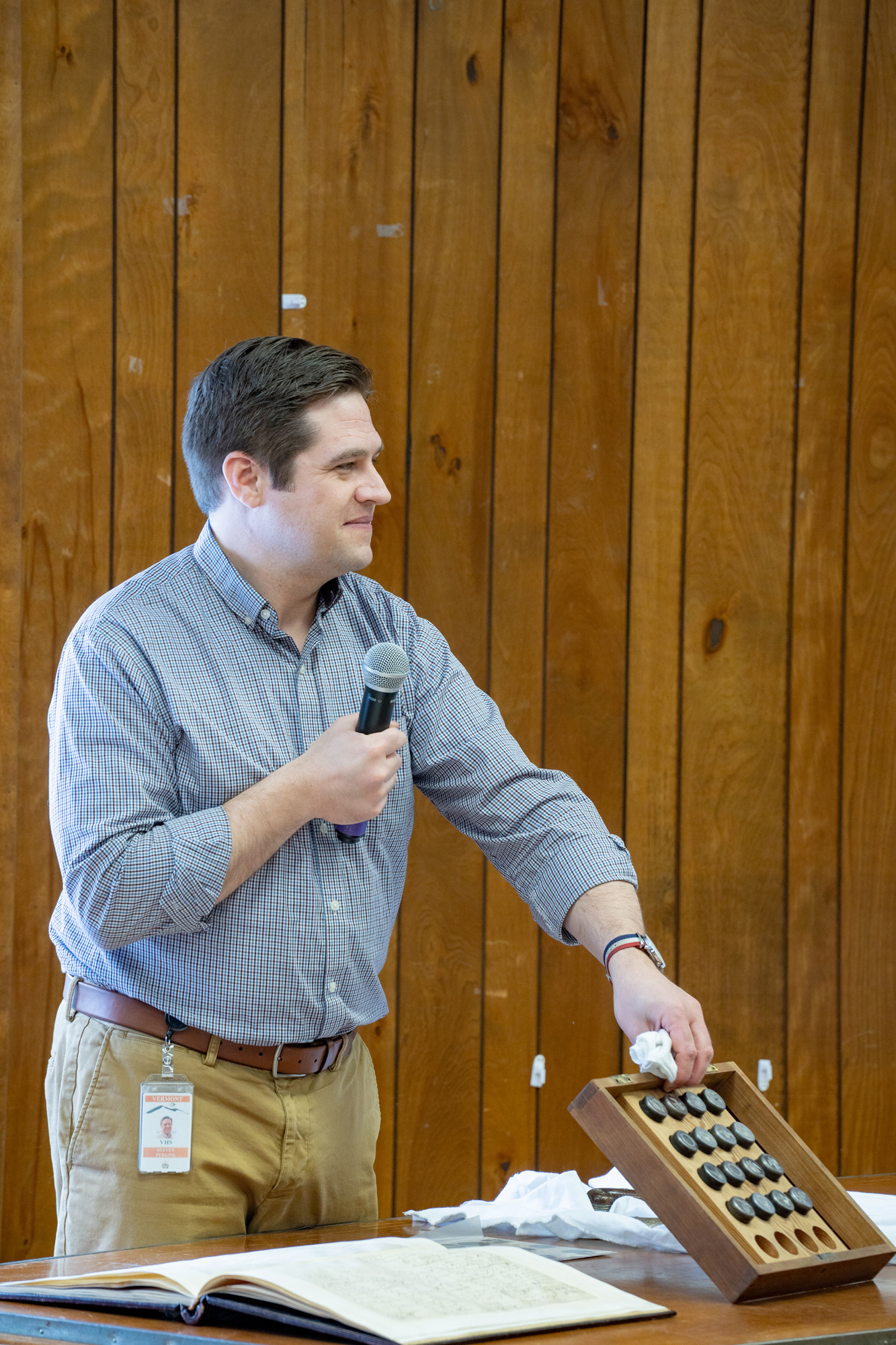
(used with sealing wax) |
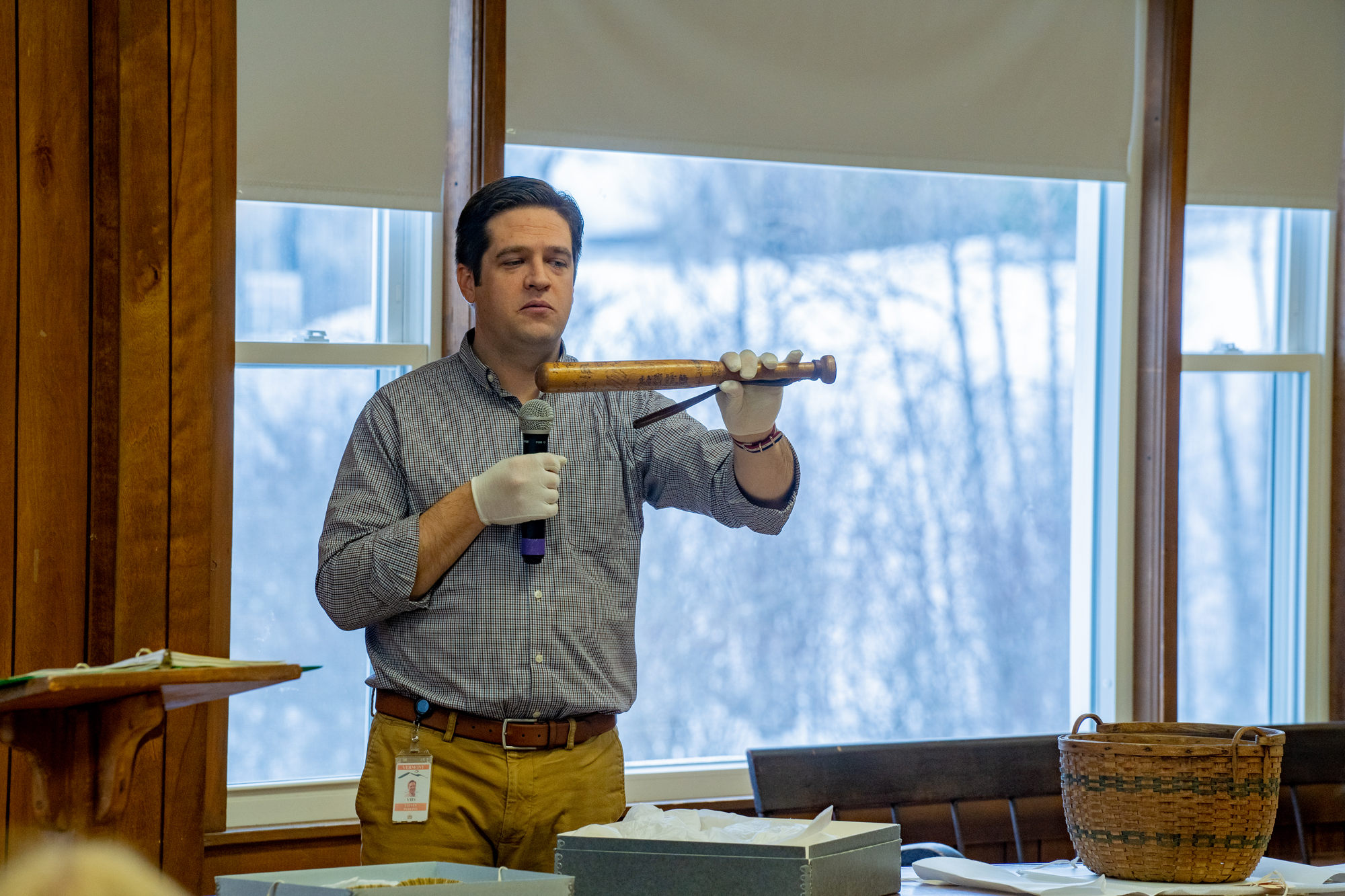
|
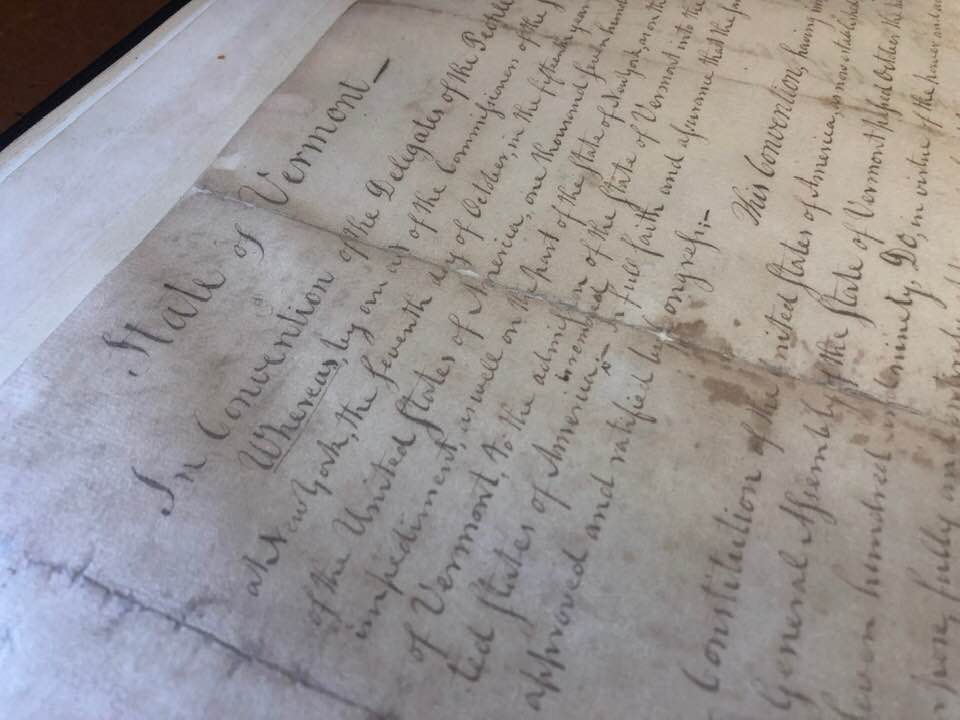
photo by: Naomi Ranz-Schleifer |
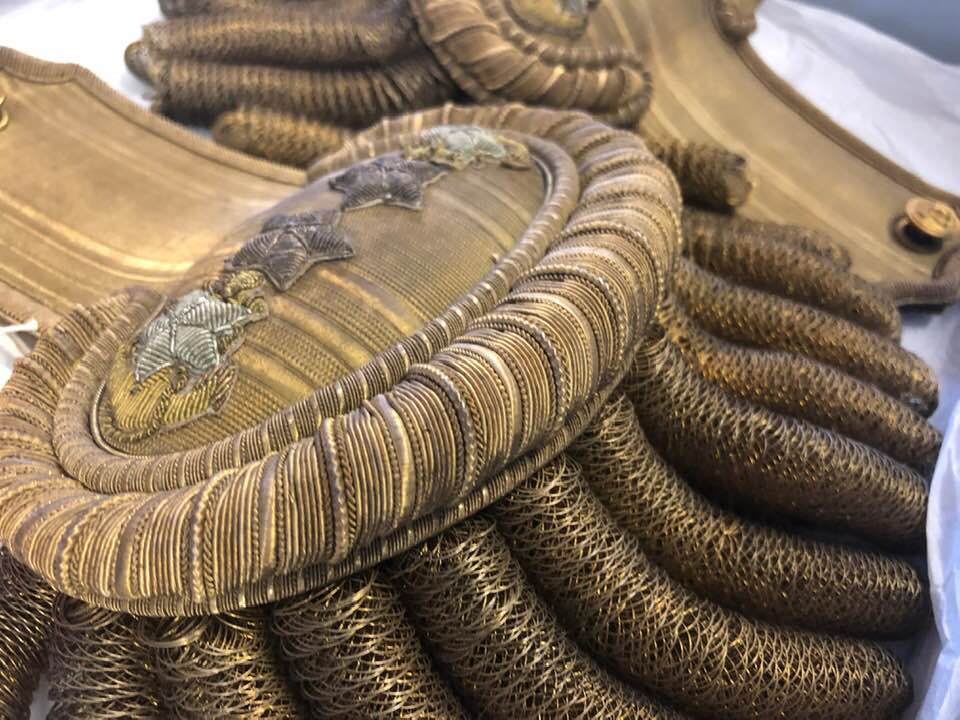
photo by: Naomi Ranz-Schleifer |
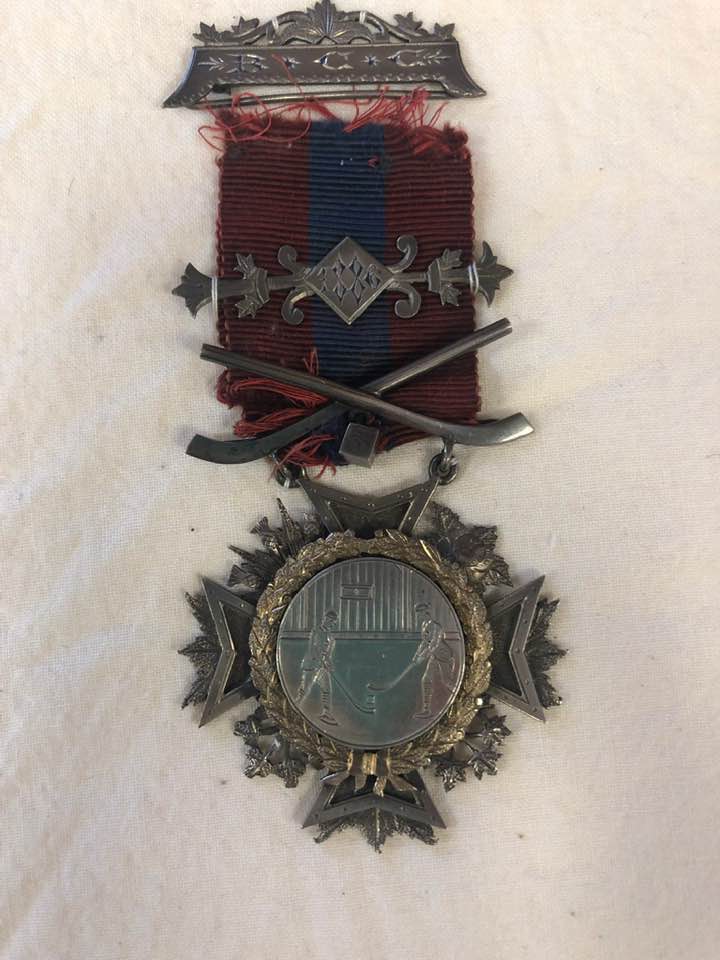
photo by: Naomi Ranz-Schleifer |
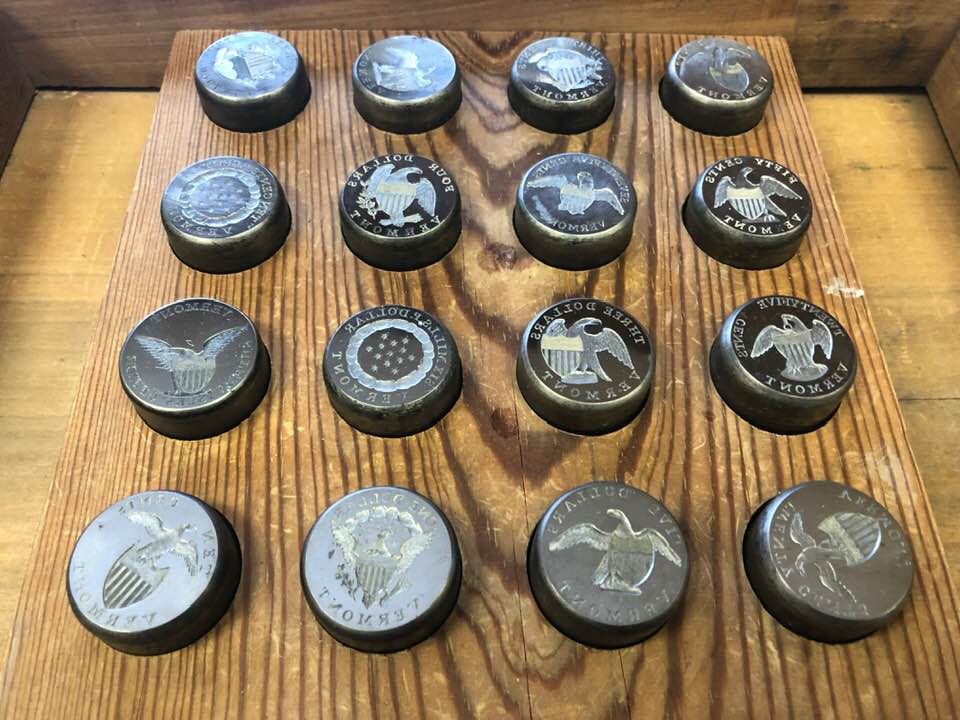
photo by: Naomi Ranz-Schleifer |
- Details
- Hits: 4182
2021 Summer Exhibit:
"Highland Cattle: Proud Heritage"
The Greensboro Historical Society's 2021 Summer Exhibit
From July 6 through August 31, 2021, the Greensboro Historical Society focused on the history of Highland Cattle in Greensboro. This heritage breed has been a part of our town for over fifty years. The exhibit, presented some of the artifacts, trophies, photos and information about Ray Shatney and Linda Steward's award-winning herd as well as information about other breeds of cattle in Greensboro.
Exhibit Poster
One Highland cow purchased in 1967 by Carroll Shatney for his Shat Acres farm in North Greensboro was the beginning of the now 150-head herd, the oldest registered Highland herd -- and one of the largest -- in the United States.
Th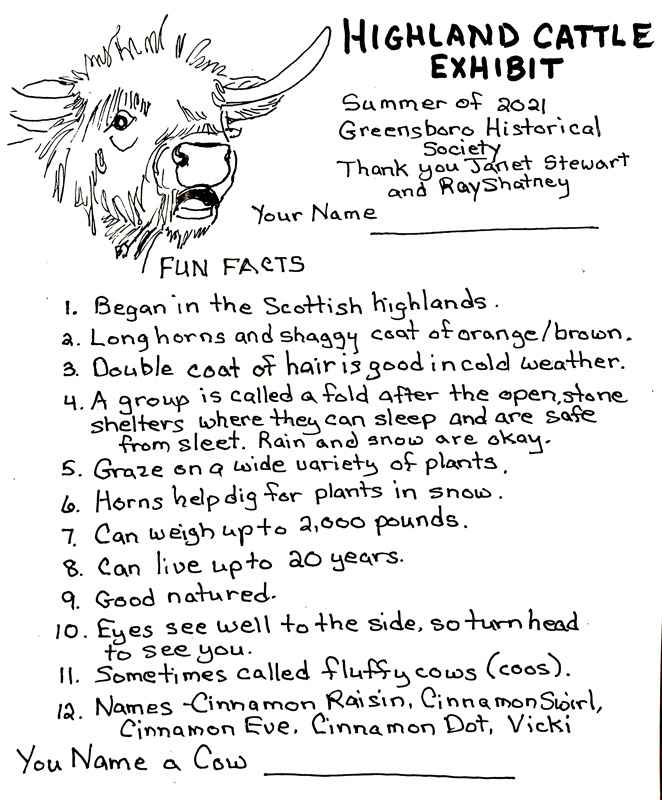 e herd, currently owned by Ray Shatney and Janet Steward, has included Grand Championship-winning cattle and yields highly celebrated Greenfield beef products. Our summer exhibit shared the history, achievements, success, and community involvement of these carefully managed cattle. As one newspaper headline in the exhibit read, Greensboro is “Steep Hills, Narrow Roads and Prize-Winning Cattle.” We are proud to have Highland cattle as part of Greensboro’s history.
e herd, currently owned by Ray Shatney and Janet Steward, has included Grand Championship-winning cattle and yields highly celebrated Greenfield beef products. Our summer exhibit shared the history, achievements, success, and community involvement of these carefully managed cattle. As one newspaper headline in the exhibit read, Greensboro is “Steep Hills, Narrow Roads and Prize-Winning Cattle.” We are proud to have Highland cattle as part of Greensboro’s history.
With the generous help of Mr. Shatney and Ms. Steward, we developed a fascinating exhibit about these unique cattle. The GHS building was bedecked with ribbons won by the Highland cattle (now pastured in both Greensboro and Plainfield), plaques and prizes filled the shelves, and displays included newspaper articles, family photographs, a Highland cattle hide, an informative video, and more.
Headlines such as “2021 AHCA Roll of Excellence Heifer of the Year: Shat Acres Raisin Brandy” and “Farmer Spotlight: Shat Acres Highland Cattle and Greenfield Highland Beef,” as well as “Highland Beef Big Hit at the Big E” and “Shat Acres Cow and Calf Named Grand Champions” all demonstrate the variety and interest of the exhibit and the award-winning quality of the cattle. During our annual book sale and ice cream social, lucky visitors had a chance to meet and pet two Highland calves.
Despite a generally slower stream of people this year due to COVID-19, multiple school field trips came to the GHS summer exhibit and visitors’ names filled up our guestbook! GHS would like to say a big thank you to Ray Shatney and Janet Steward for their help with this exhibit, as well as for sharing the real and fascinating lives behind the photos and awards.
A scrapbook of this exhibit is available to view at the GHS museum.
When: 2021 Summer (July 6 through August 31)
Where: Exhibit at GHS Museum
The Exhibit
The exhibit featured several panels with historical photos of the farm, family, and the herd amongst clippings of newspaper and magazine articles, book entries and exhibition ribbons.
 |
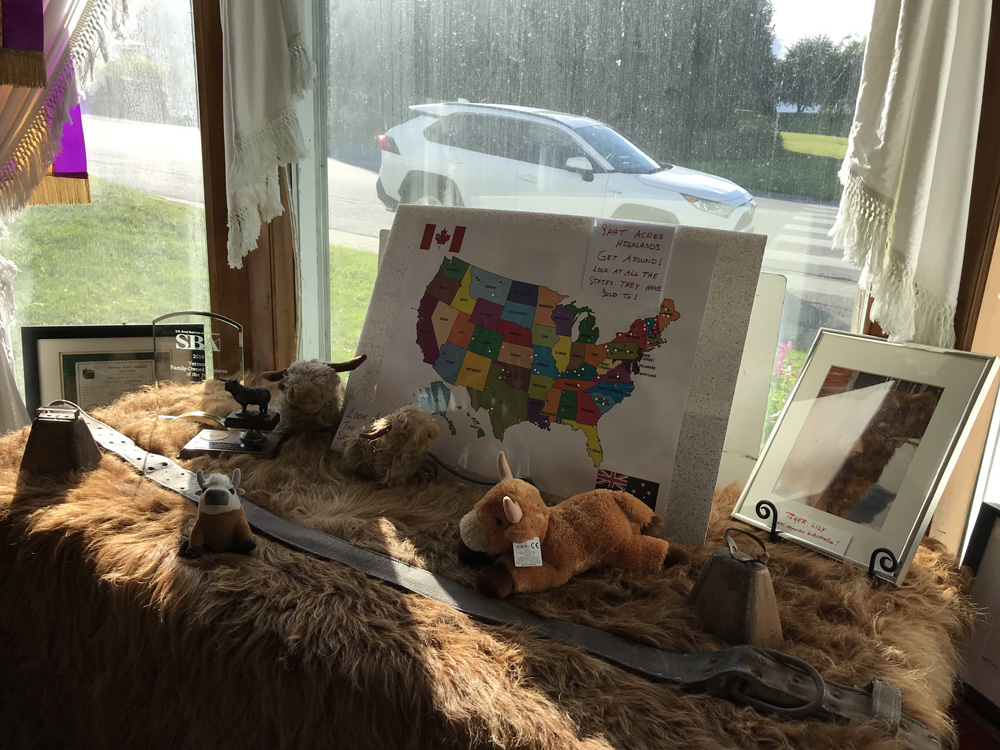 |
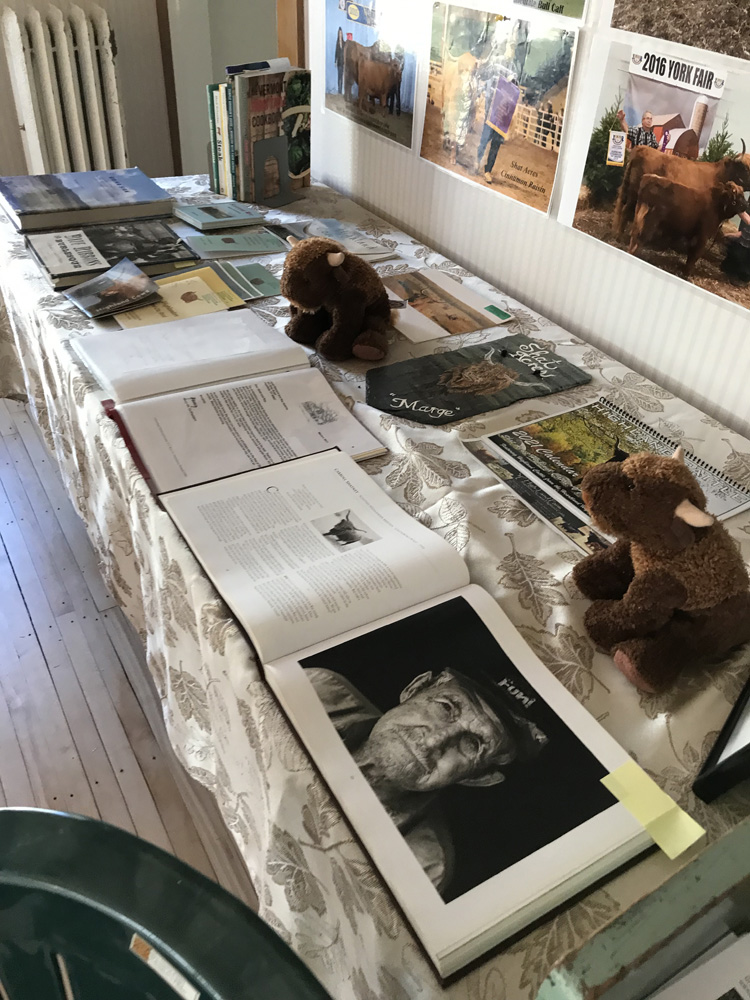 |
 |
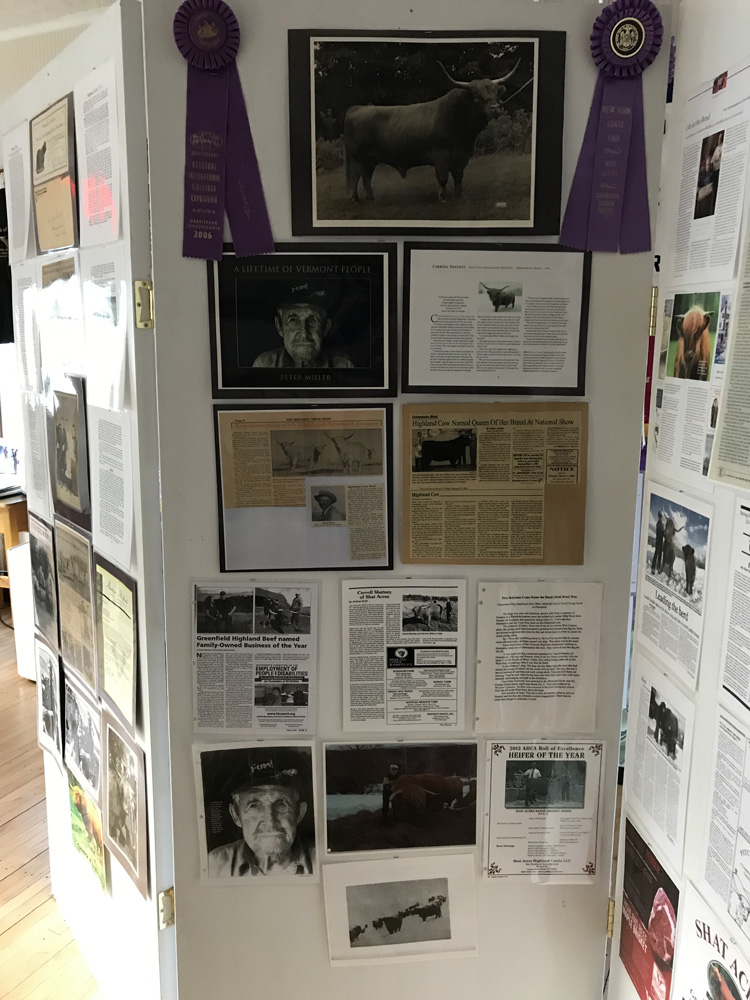 |
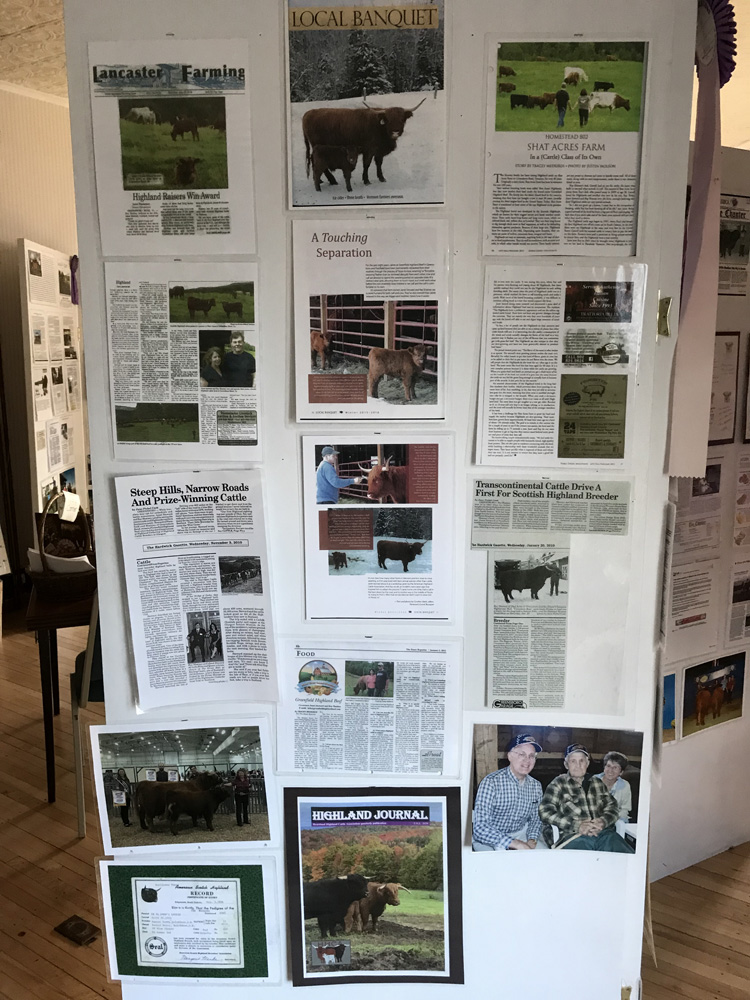 |
The exhibit included a 'match the breed' section (below), a coloring station and an electronic matching board created by Leo and Amelia Circosta. See if you can match all the cow breeds below!
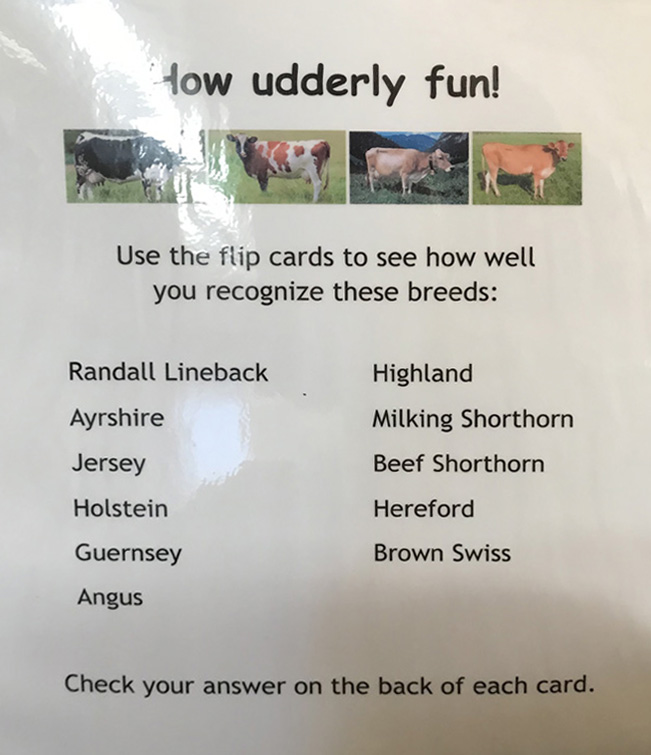 |
 |
|
|
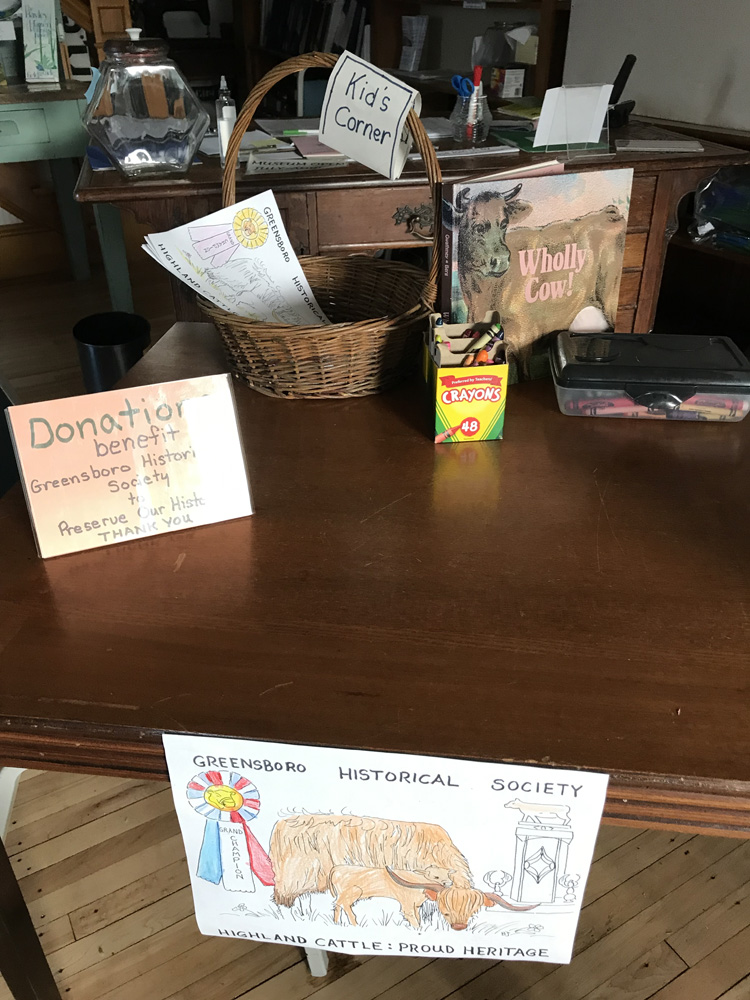 |
Shat Acres
Old and recent news articles recounted the history of Shat Acres from Carroll Shatney's early work with dogs to catch calves to the growth of the herd. Photos of the family and farm over the years helped to anchor time and place to Greensboro; but also to exhibitions across the country.
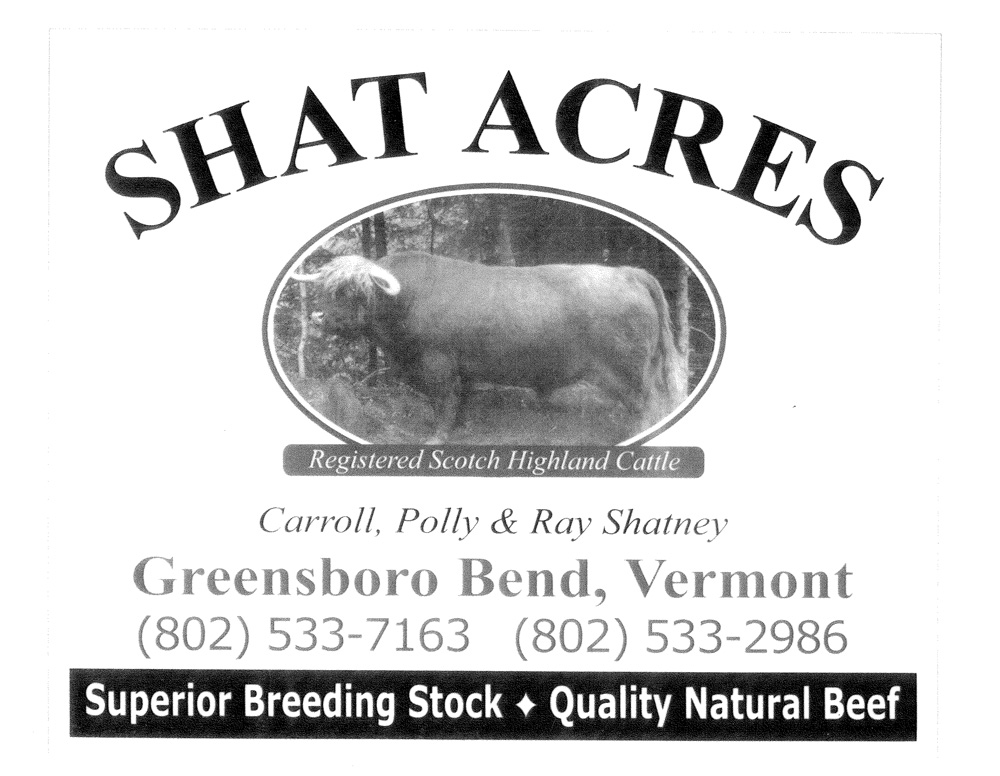 |
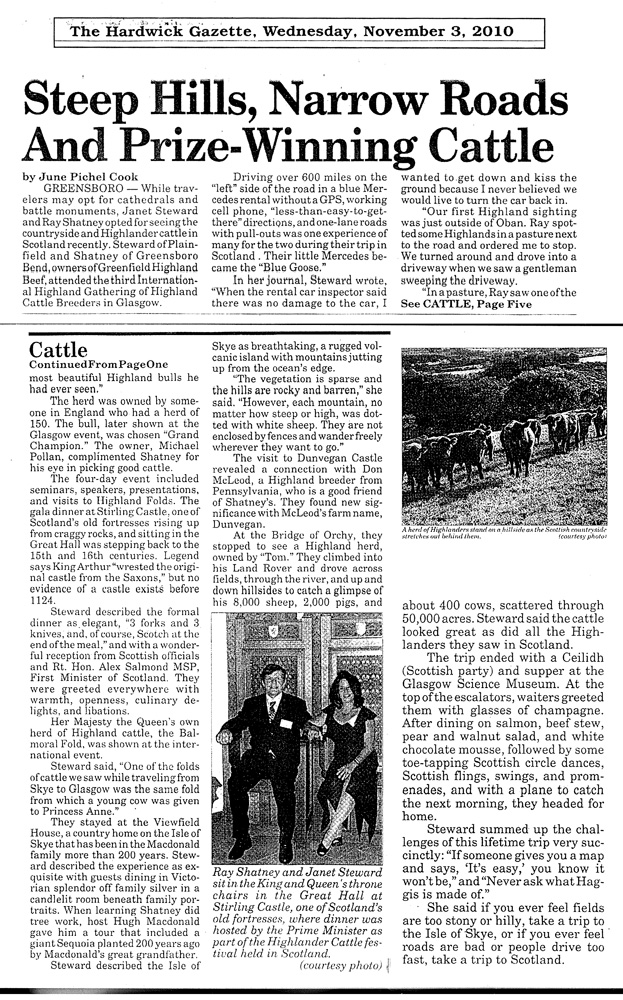 |
 |
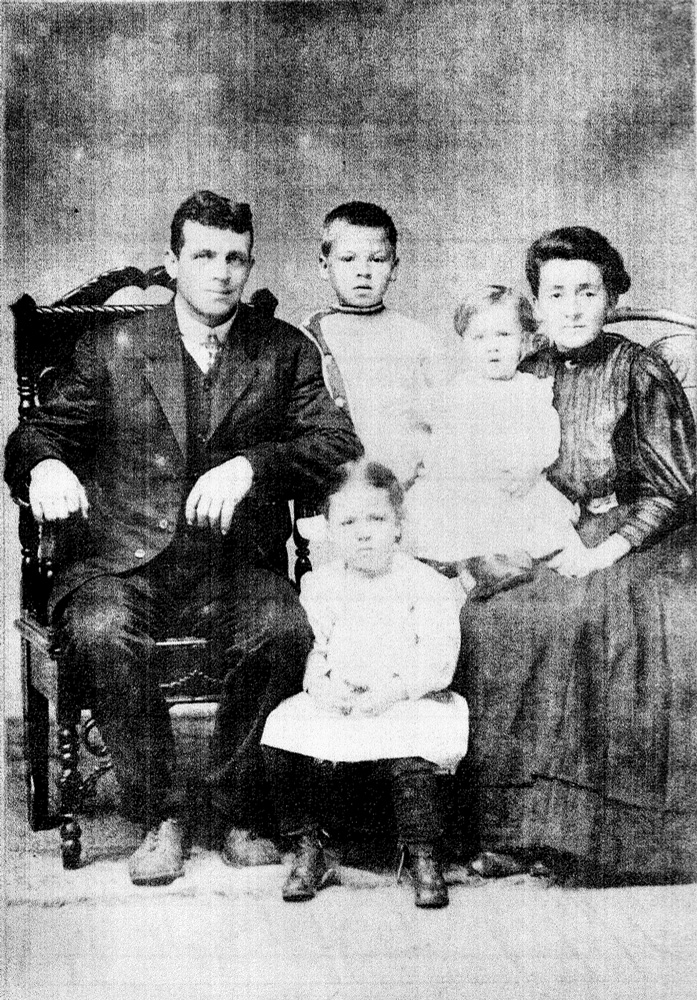 |
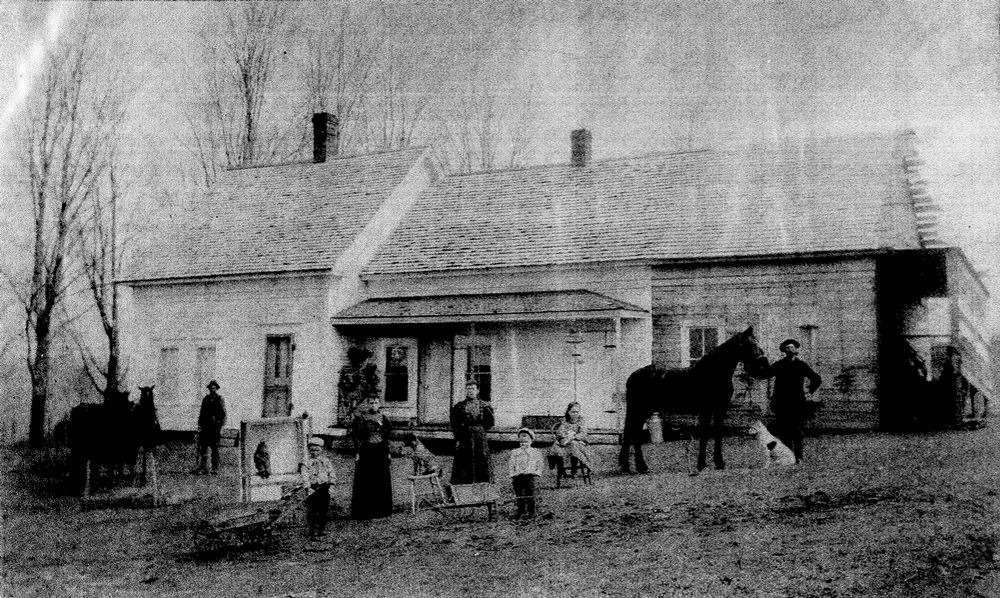 |
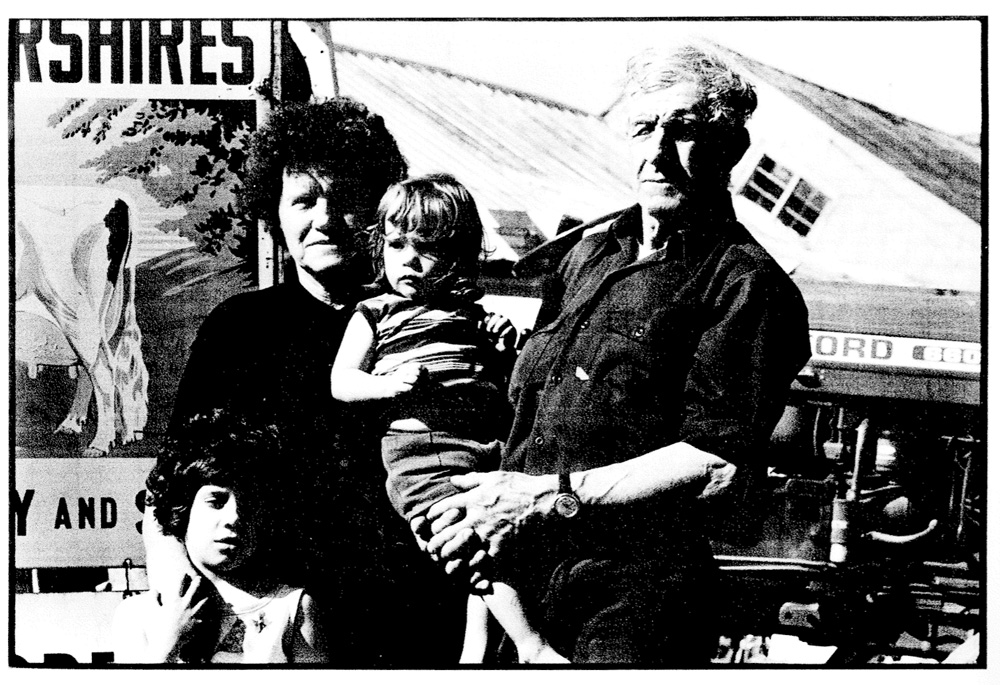 |
Community Involvement
Shat Acres' success with their Highland herd was often met letters of commendation as well as appreciation from those that benefited from their knowledge and charitable nature. This part of the exhibit shared a sampling of the many letters of thanks for their generosity. Ray and Janet received notes from U.S. Senator Sanders, GHS president Nancy Hill, Center for an Agricultural Economy, Vermont Foodbank, Sterling College, Vermont Agency of Agriculture and many more local, regional and national entities.
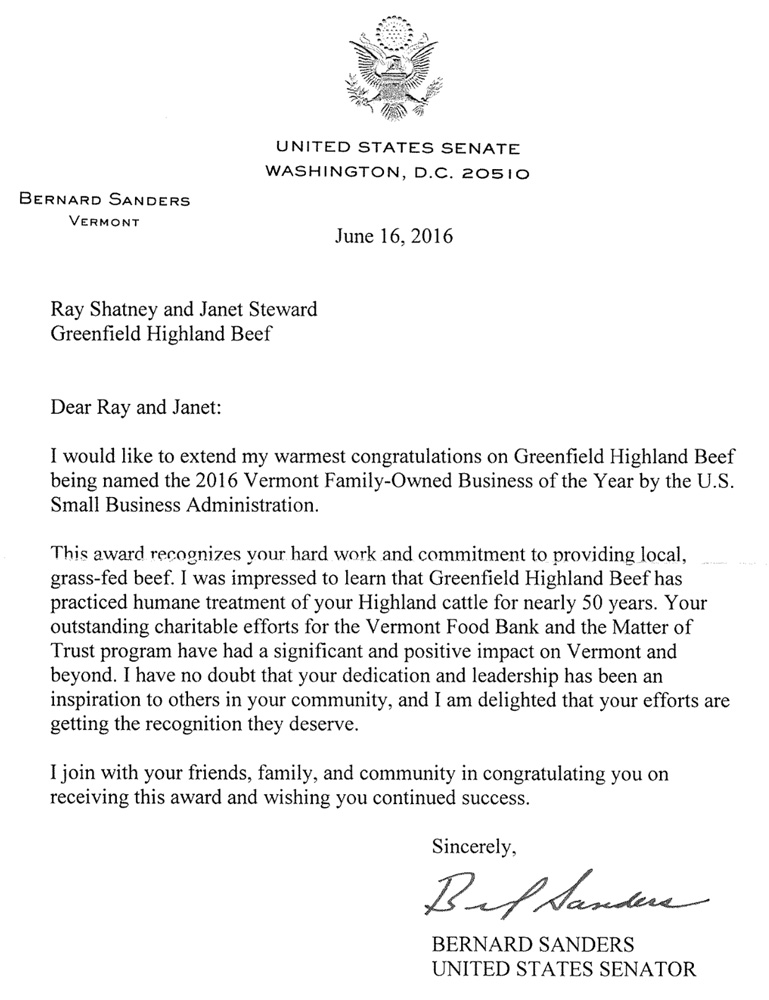 |
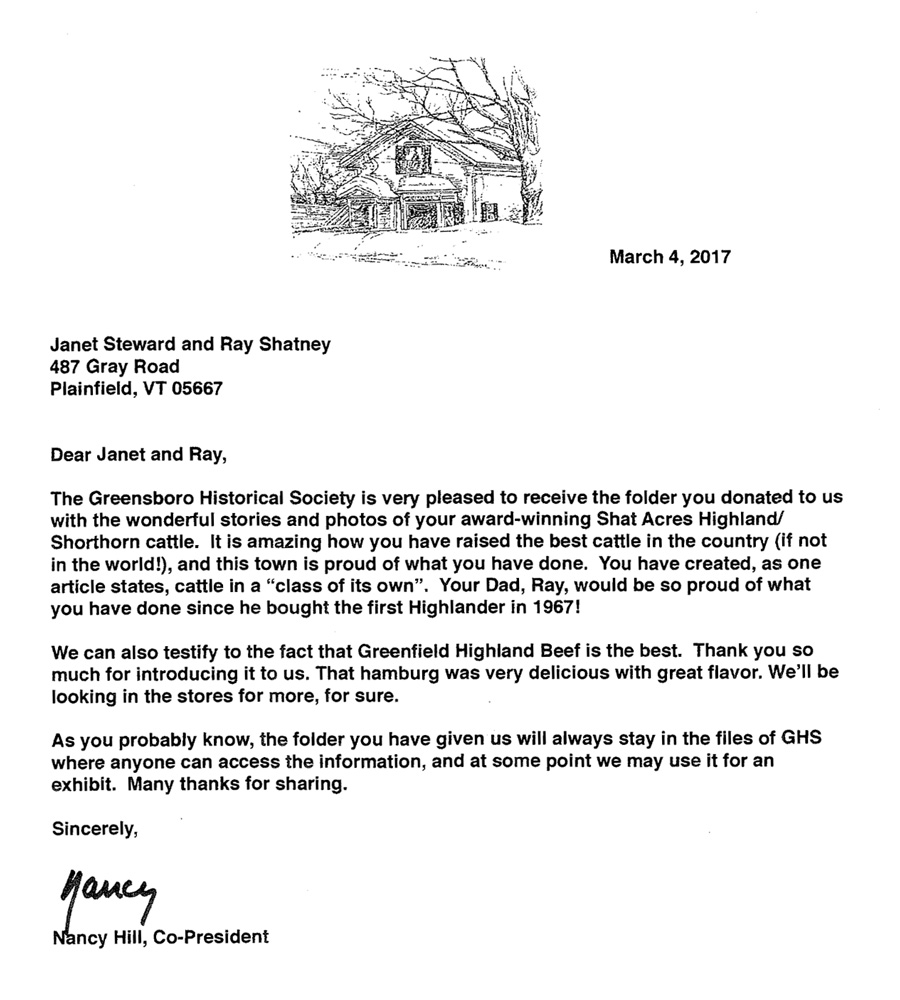 |
 |
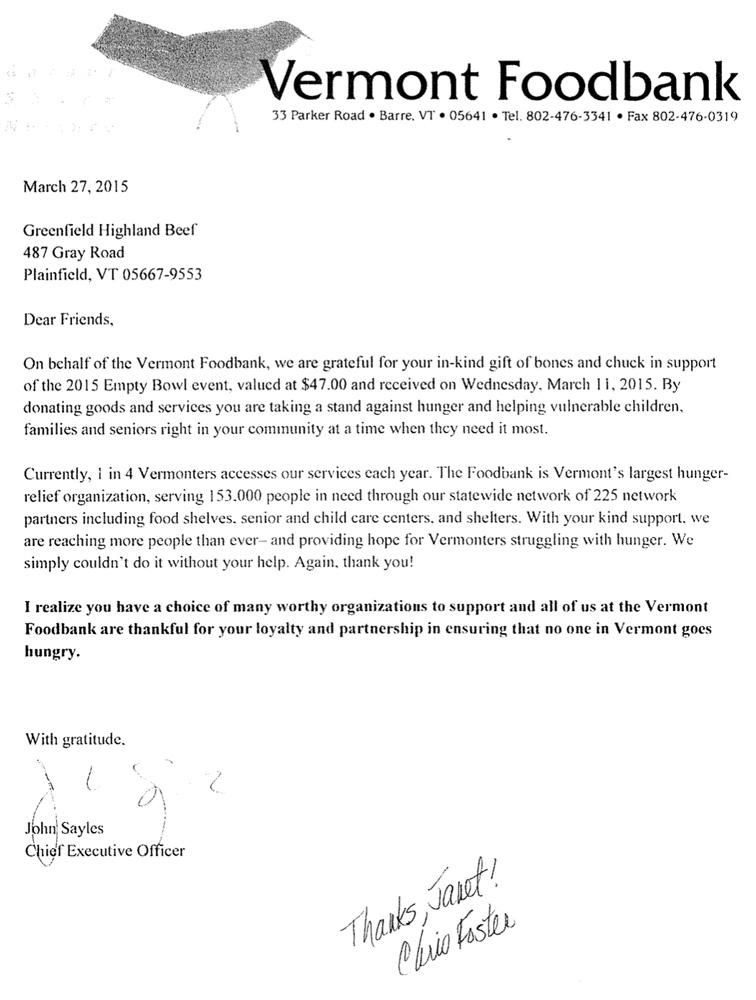 |
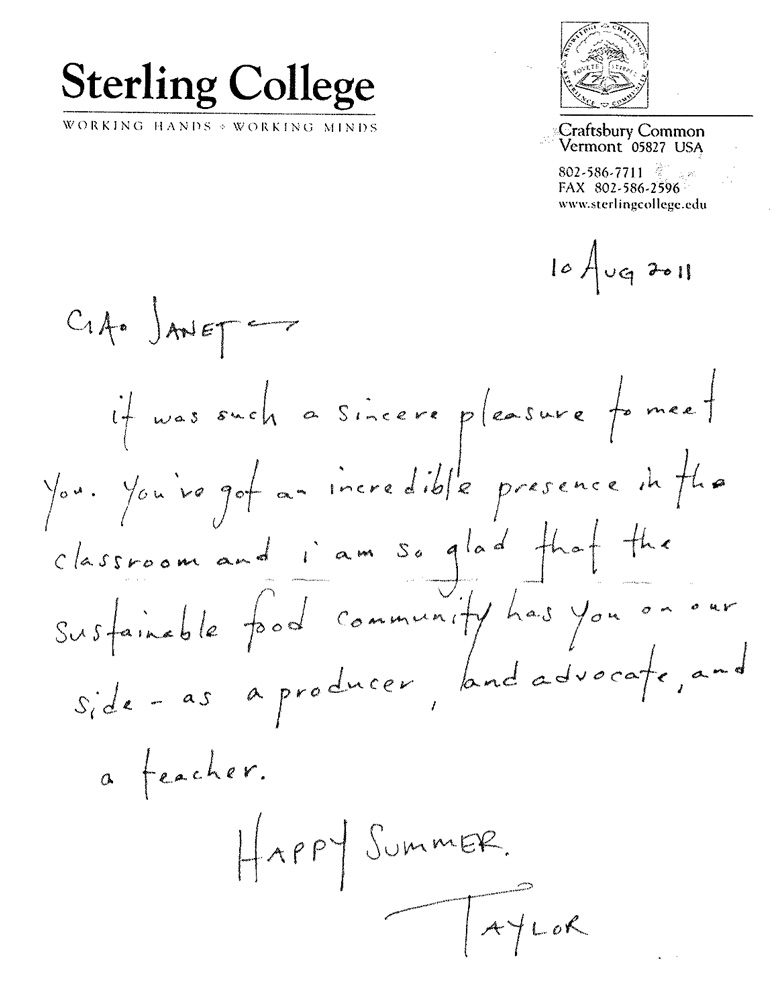 |
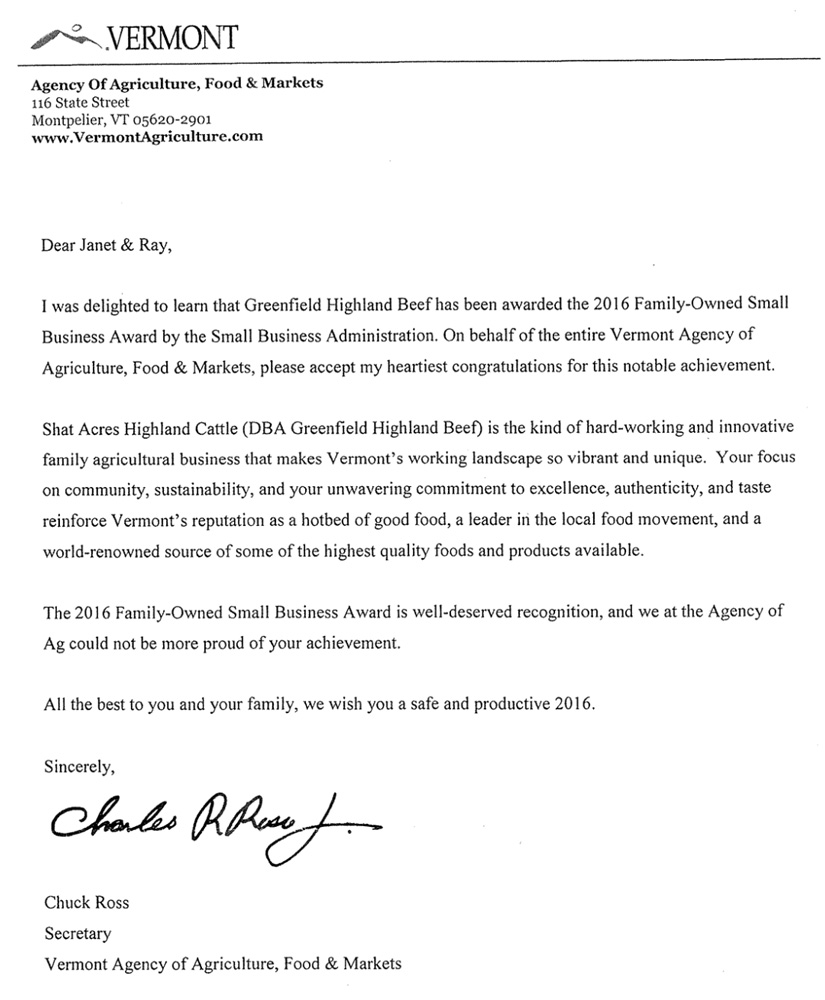 |
Beef
Documentation of the Ray and Janet's career goes beyond their show-winning Highland herd to include the personal notes of thanks for the beef from their herd. This part of the exhibit showcased laudations from customers from around the world as well as mentions and features in the news. Ray and Janet feature in articles with 'question and answer' sections about what makes their beef different; and the farming methods for raising high-quality beef cows are presented. Cooking recipes calling for Highland beef as well as an article about their Highland beef in a culinary TV show were on display.
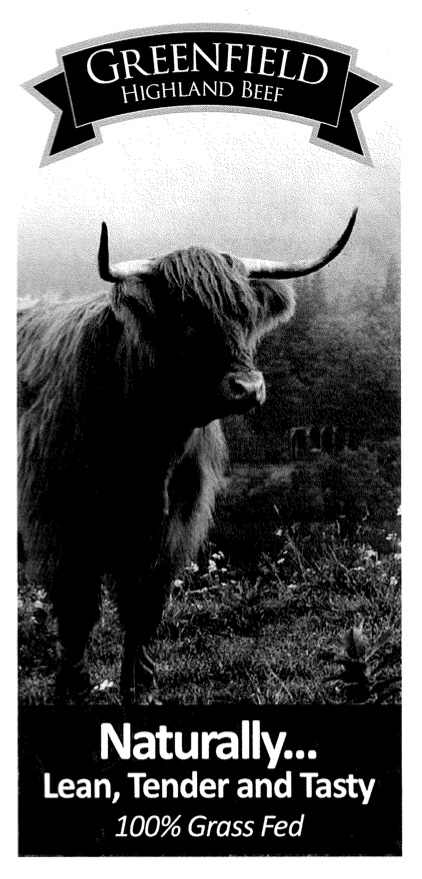 |
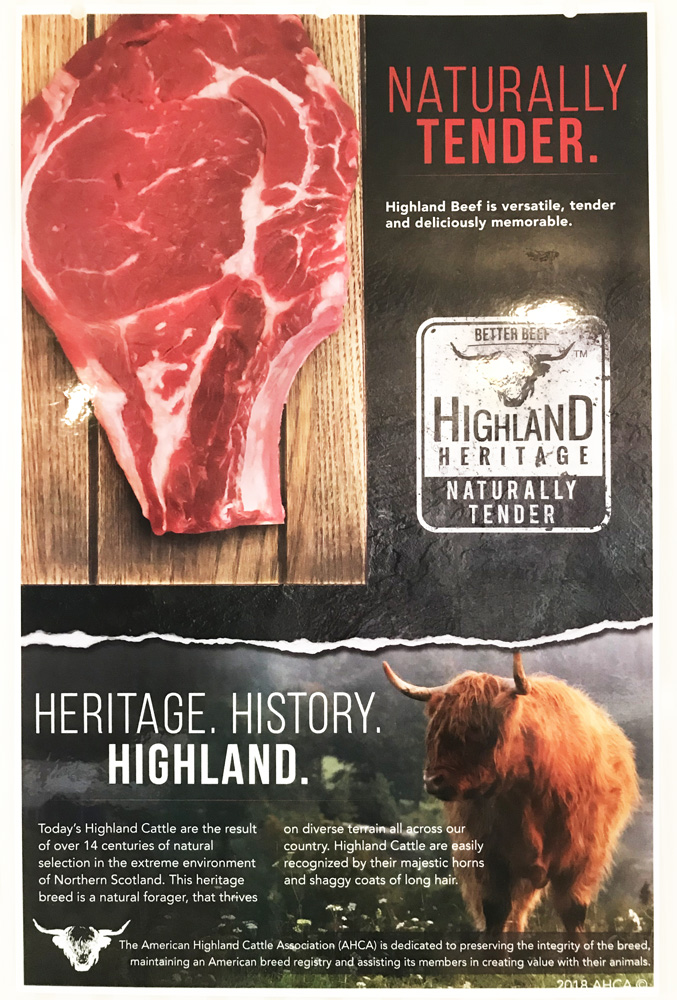 |
 |
 |
Trade Publications and Press
The exhibit included articles on the history of the Highland cattle breed, their place of origin and how people became interested in supporting their genetic line. It also documented some of the older periodicals like "Highland Cattle Society of Scotland"'s first herd book from 1885 and a news article from "The South Dakota Stockgrower" from 1954. Information from these sources also documented the first Highland cattle brought to the United States.
In 2021, a cow from Ray and Janet's Highland herd featured on the cover of the wall calendar for the "Heartland Highland Cattle Association.
 |
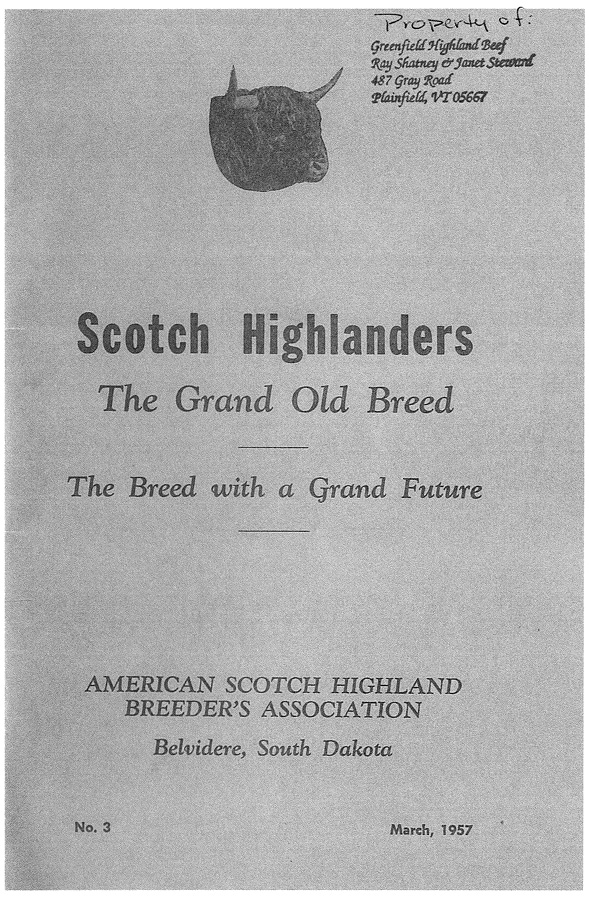 |
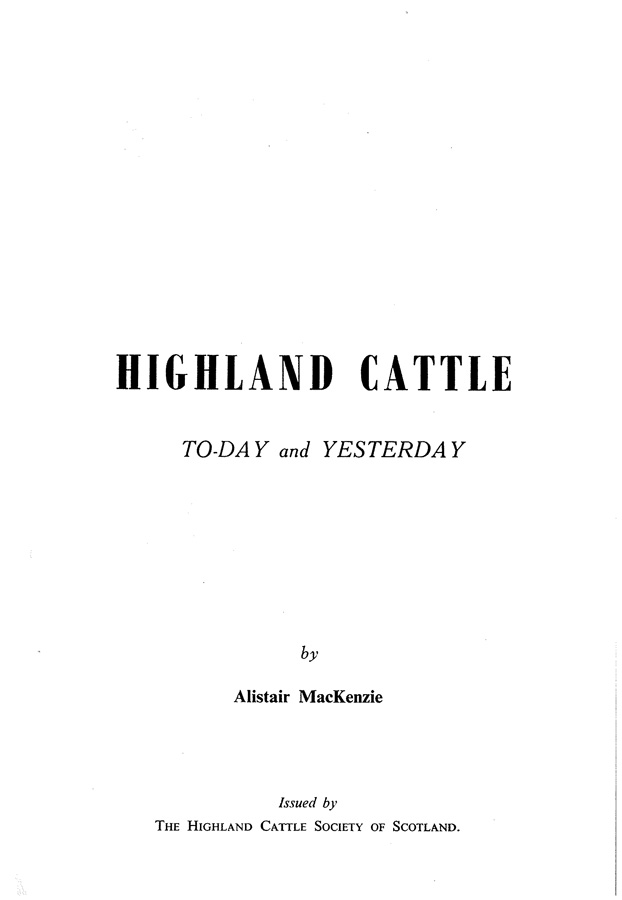 |
 |
Awards and Honors
The exhibit, while filled with colorful stories, was also filled with colorful awards taking shape as ribbon, medals, plaques, trophies and letters of commendation. There were newspaper and magazine articles (both local and national) about the awards as well. Images of Ray and Janet with their show-winning cattle and award banners span their career with the Highland herd. There was also general information about cattle shows and the process of breeding award-winning cattle.
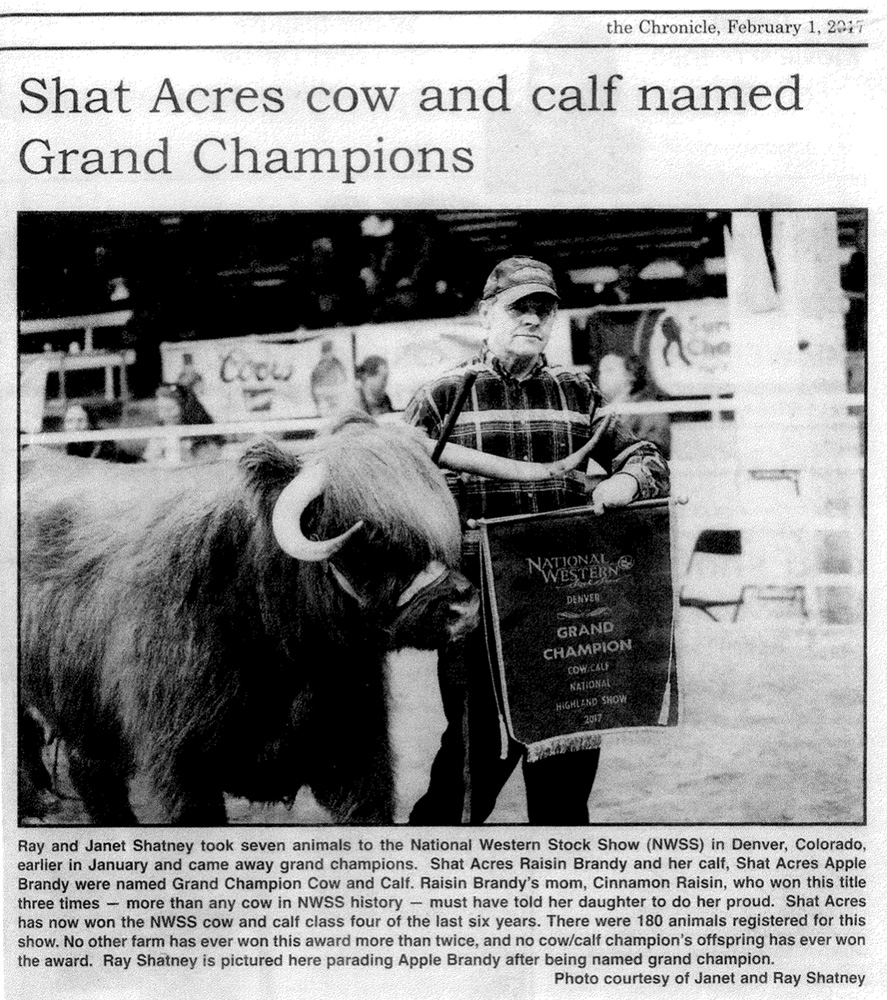 |
 |
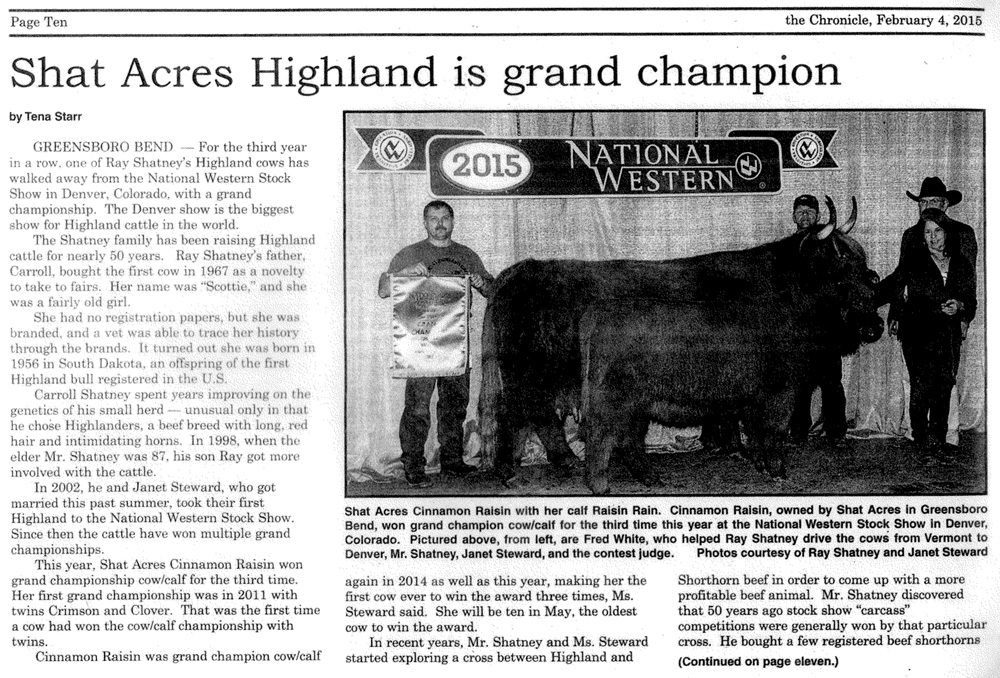 |
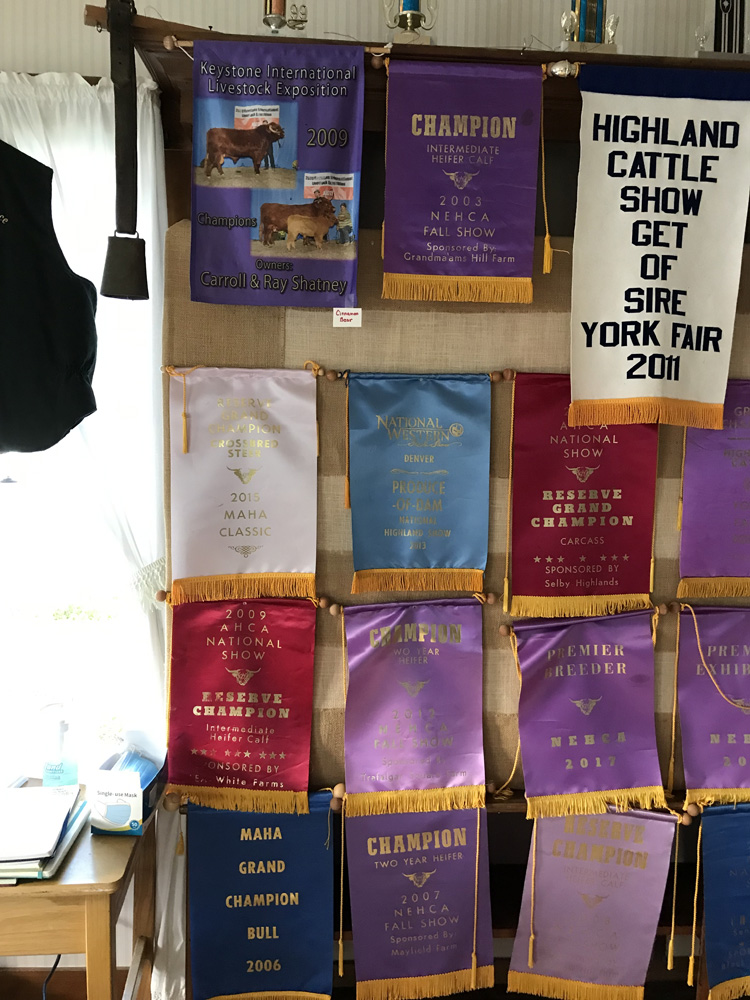 |
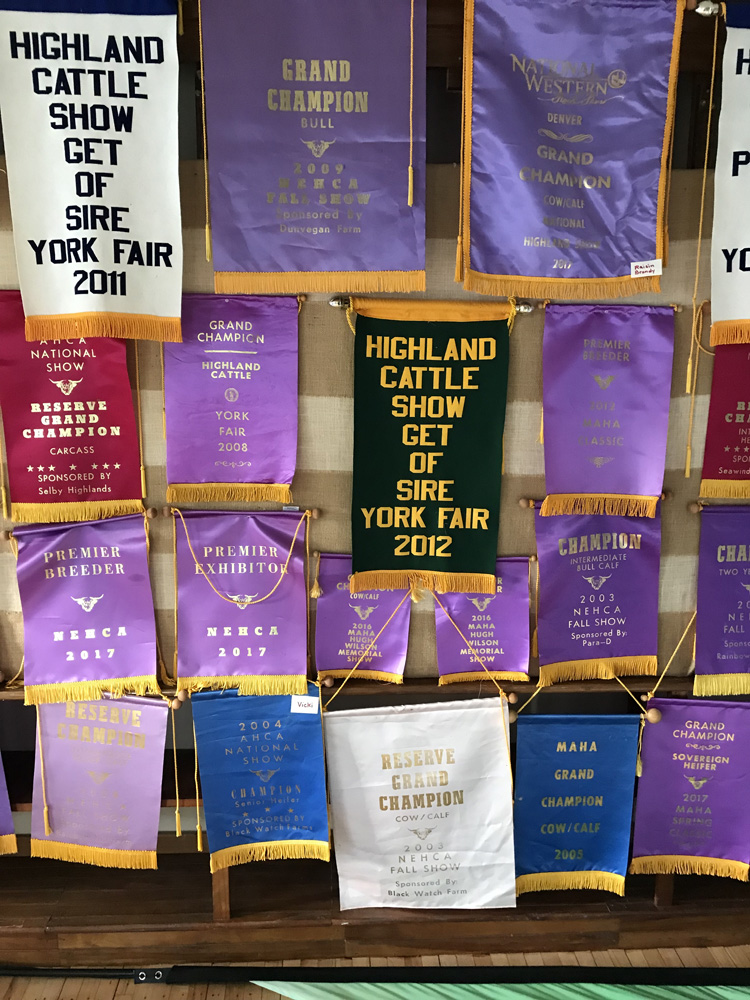 |
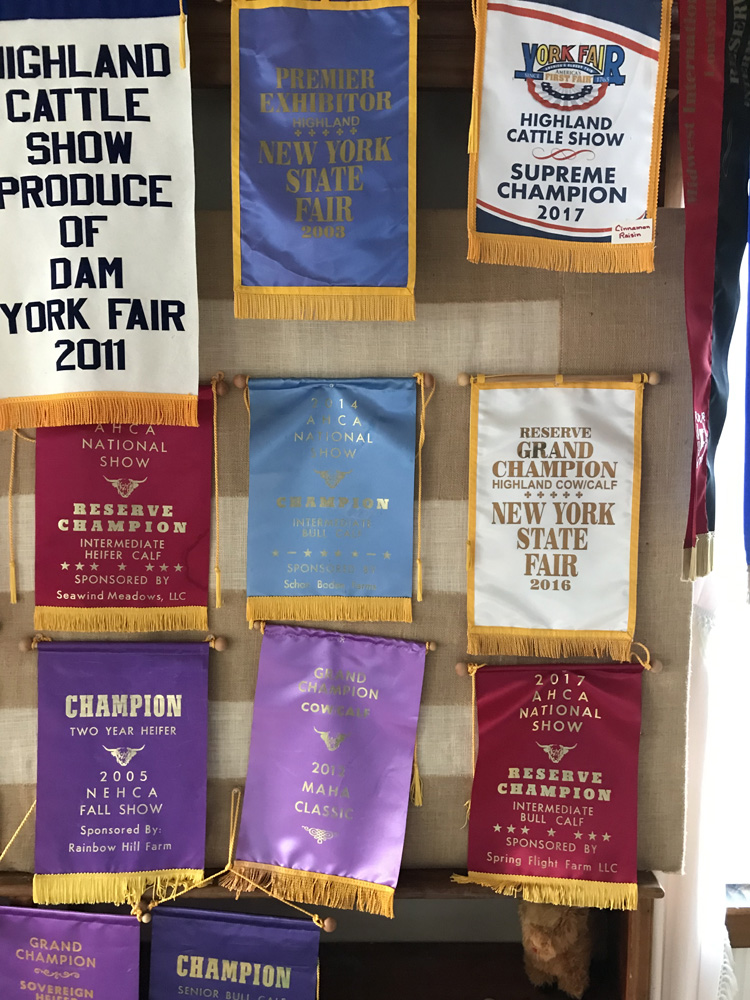 |
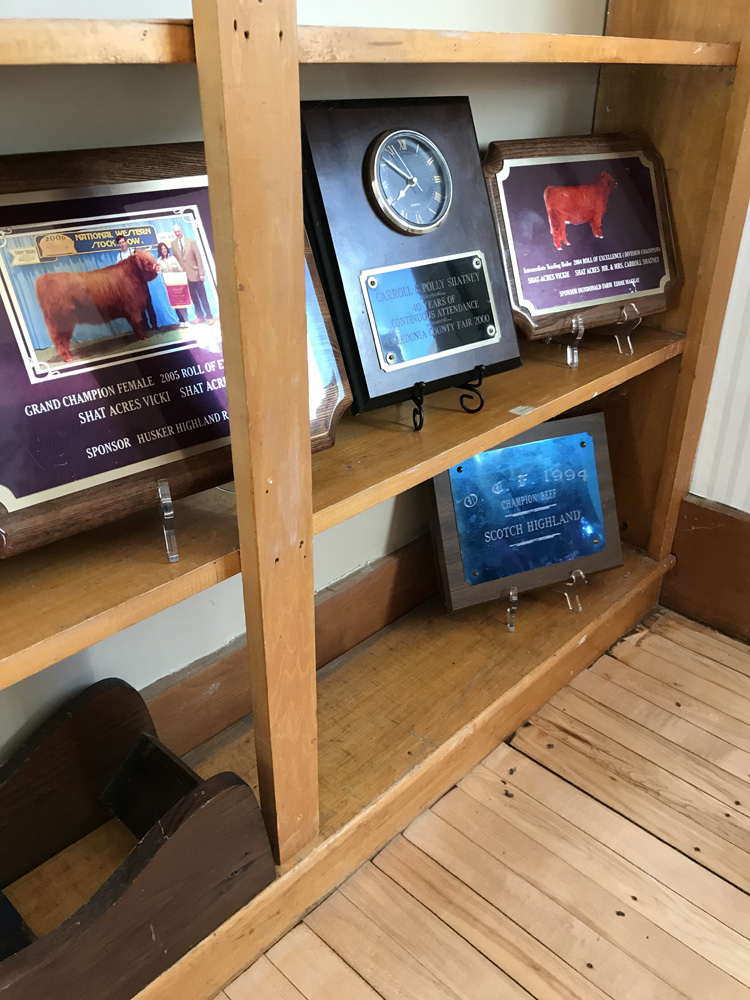 |
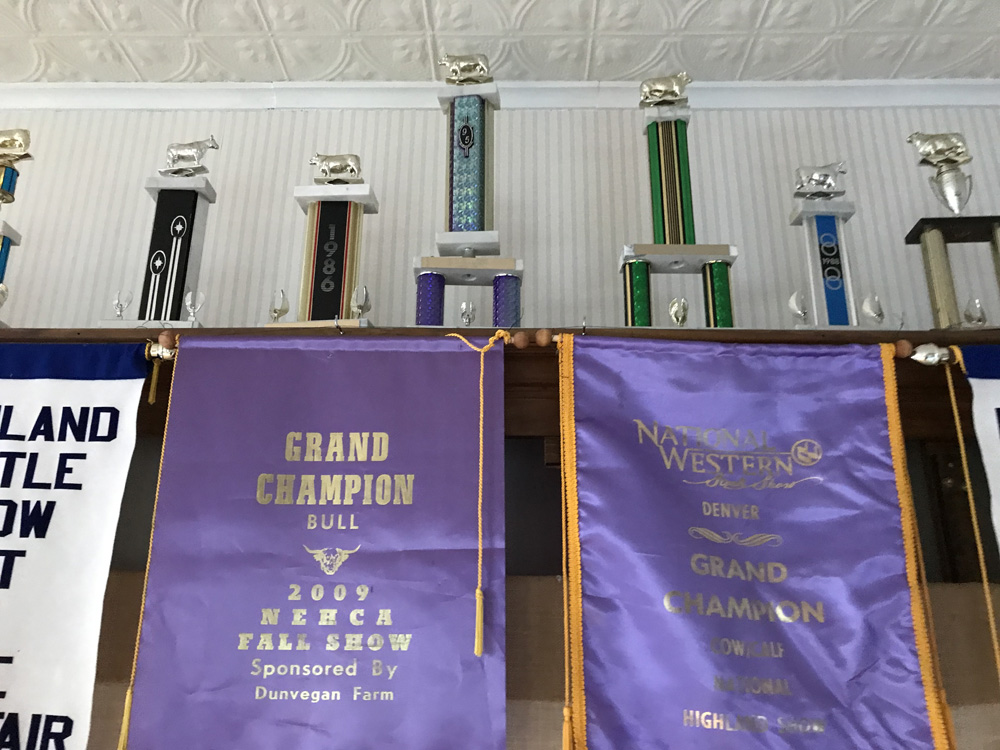 |
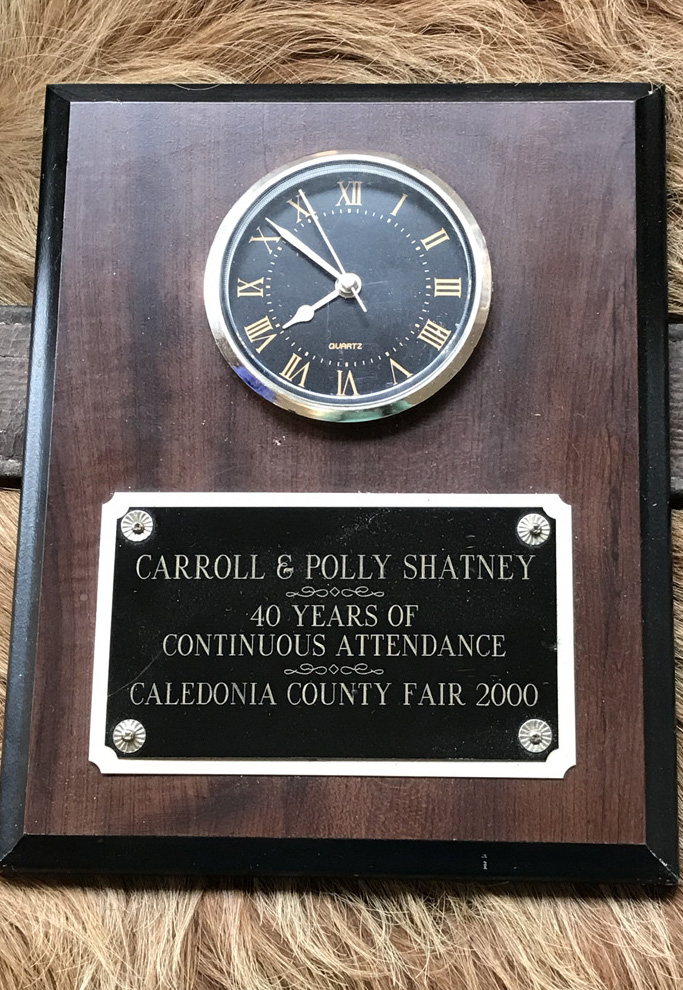 |
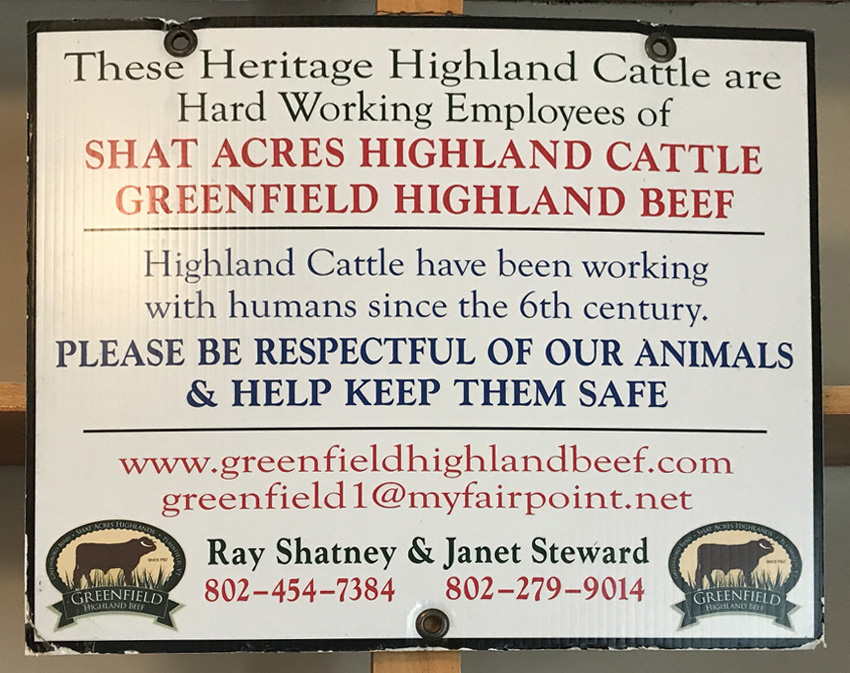
- Details
- Hits: 5984
Summer Presentation: "The First Vermonters -- Indigenous People"
Presentation by Bobby Farlice-Rubio of Fairbanks Museum
The Abenaki people have lived in Vermont for thousands of years, and they are still here today. By focusing on the individual lives of seven famous Abenakis from different centuries, we’ll explore how their culture has survived the centuries and evolved to meet the challenges of a changing world. We’ll also discover how the Abenaki Nation has shaped the present and future of all of Vermont’s people.
When: August 6th (Monday) at 7:30pm
Where: Fellowship Hall of the Greensboro United Church of Christ
Click on the image below to view a video of the presentation
